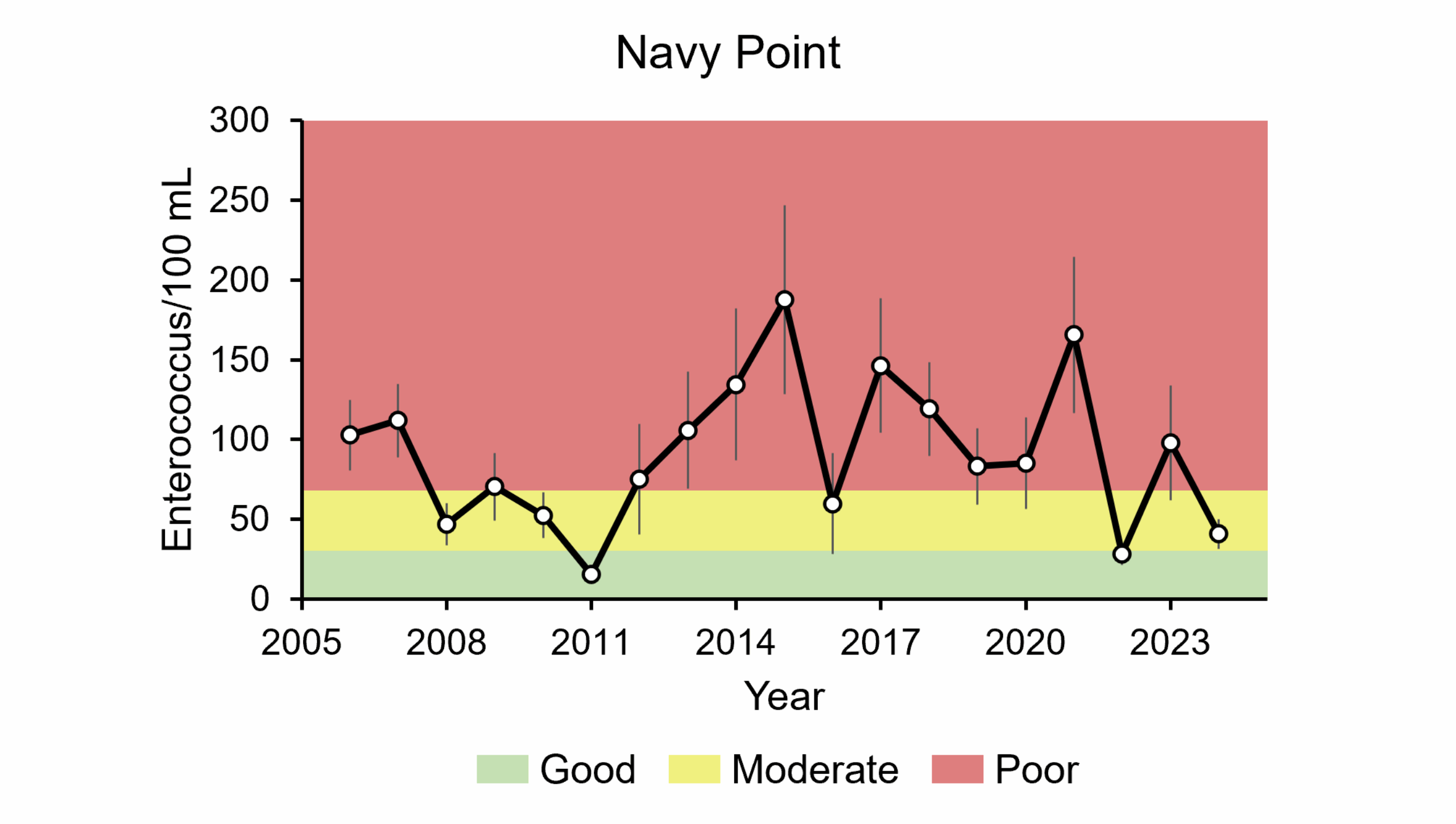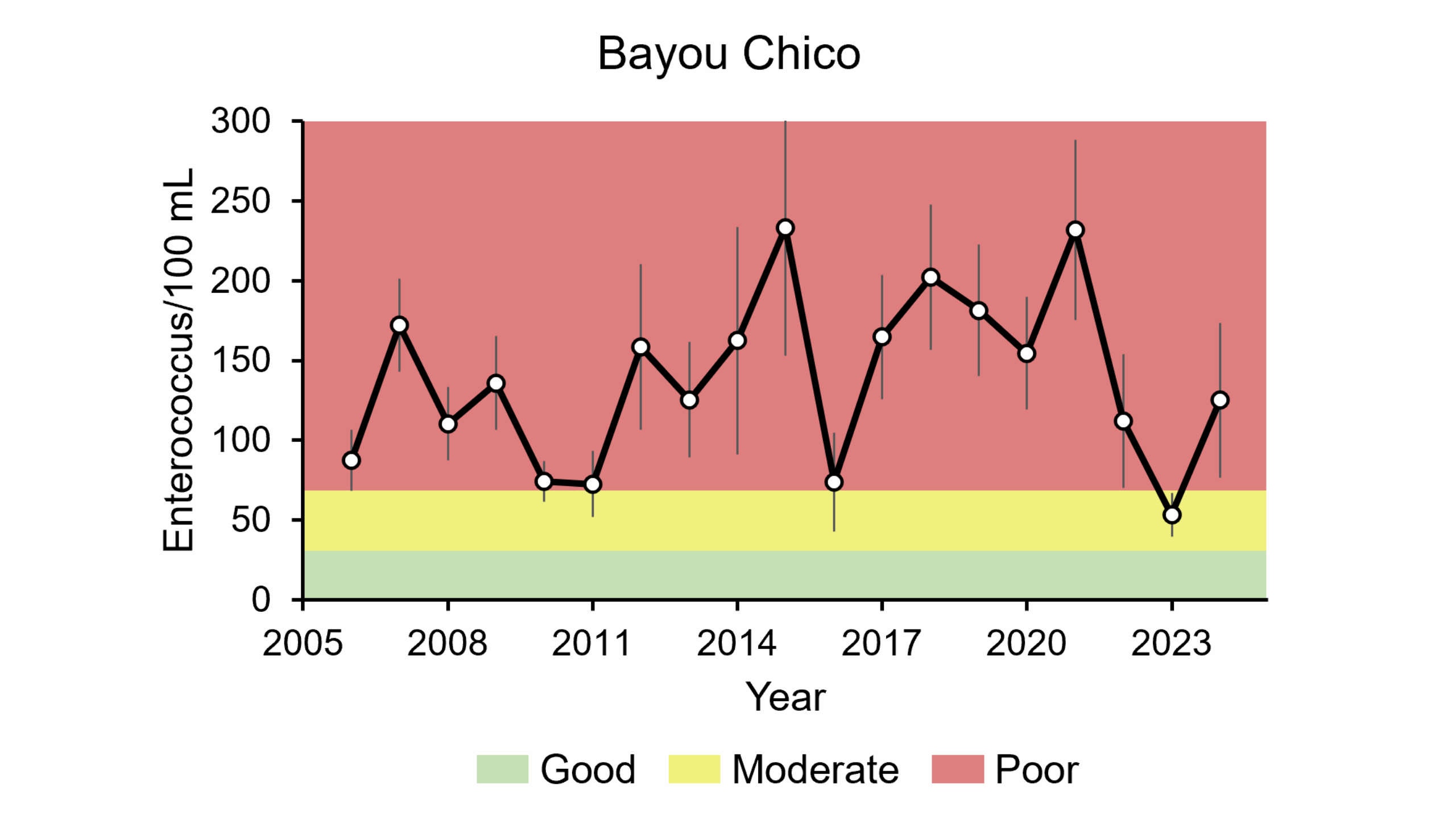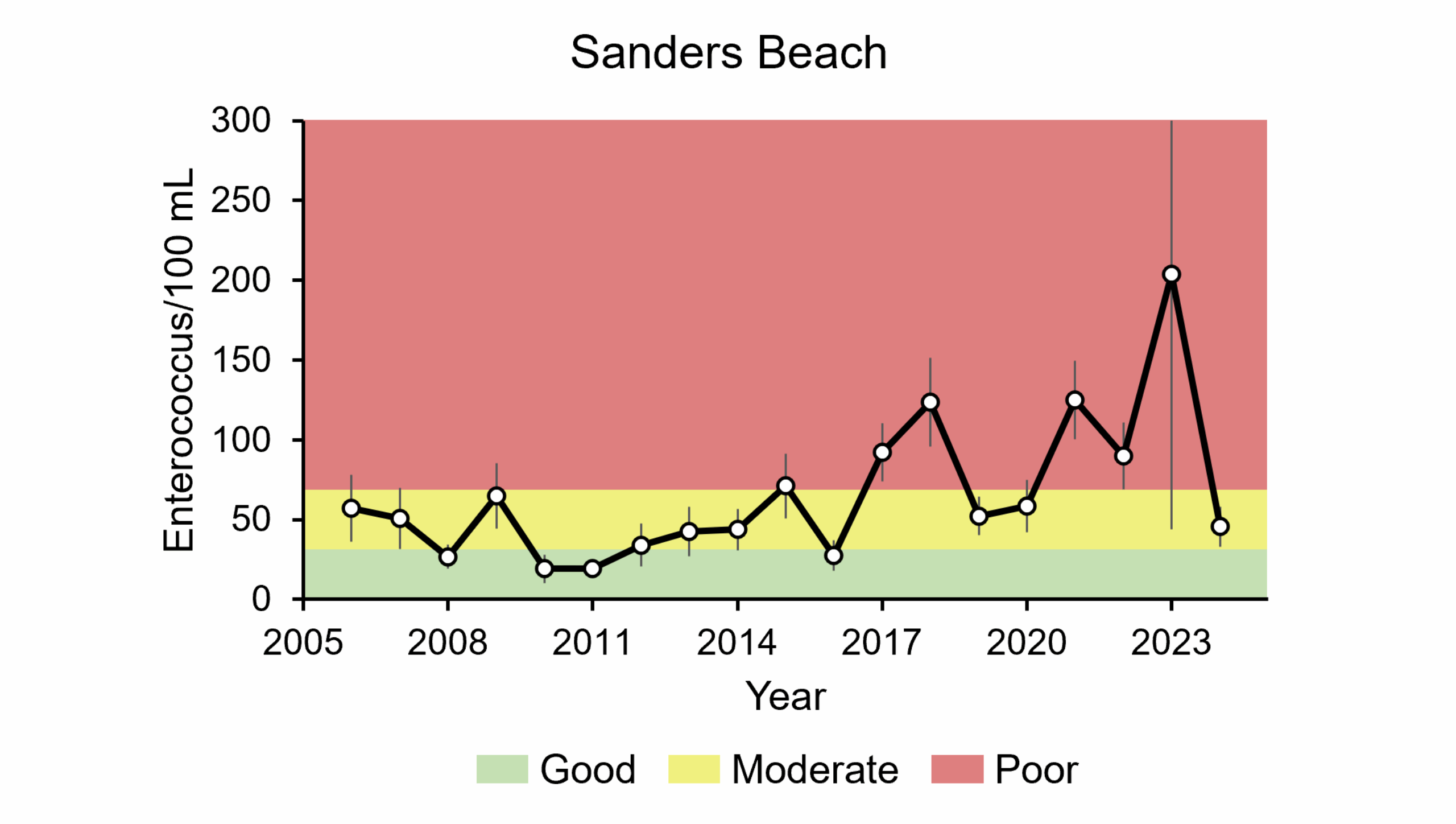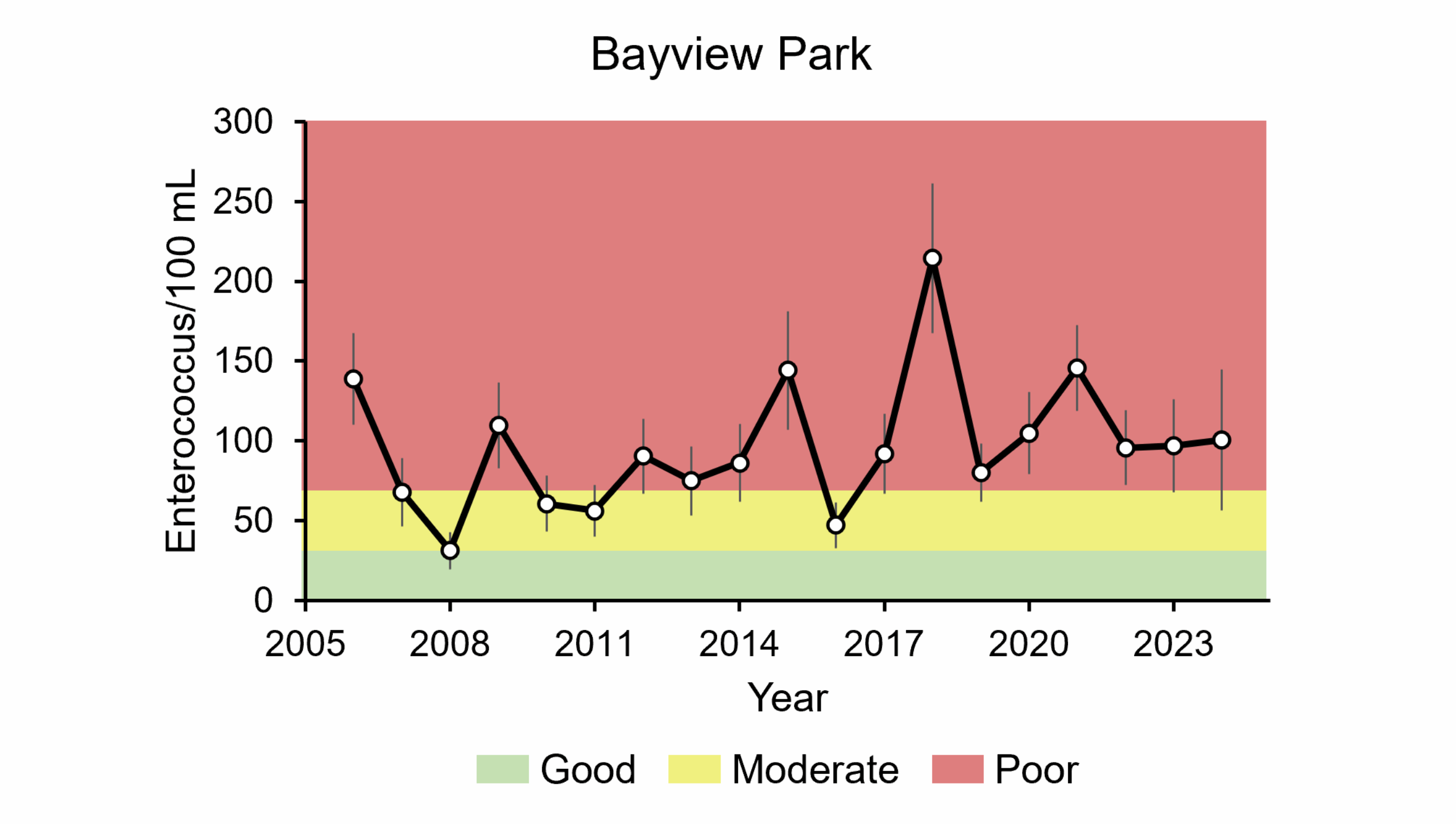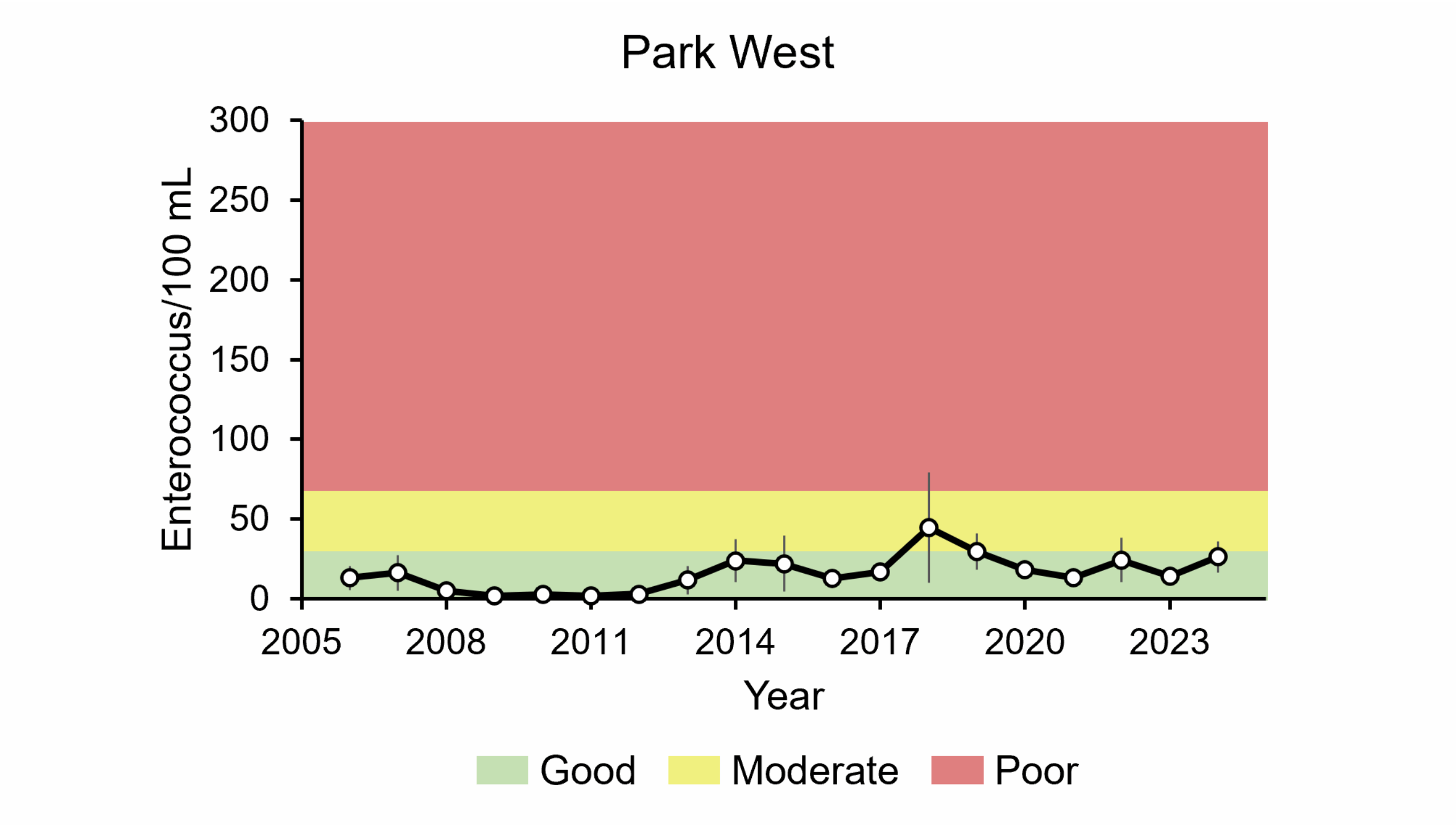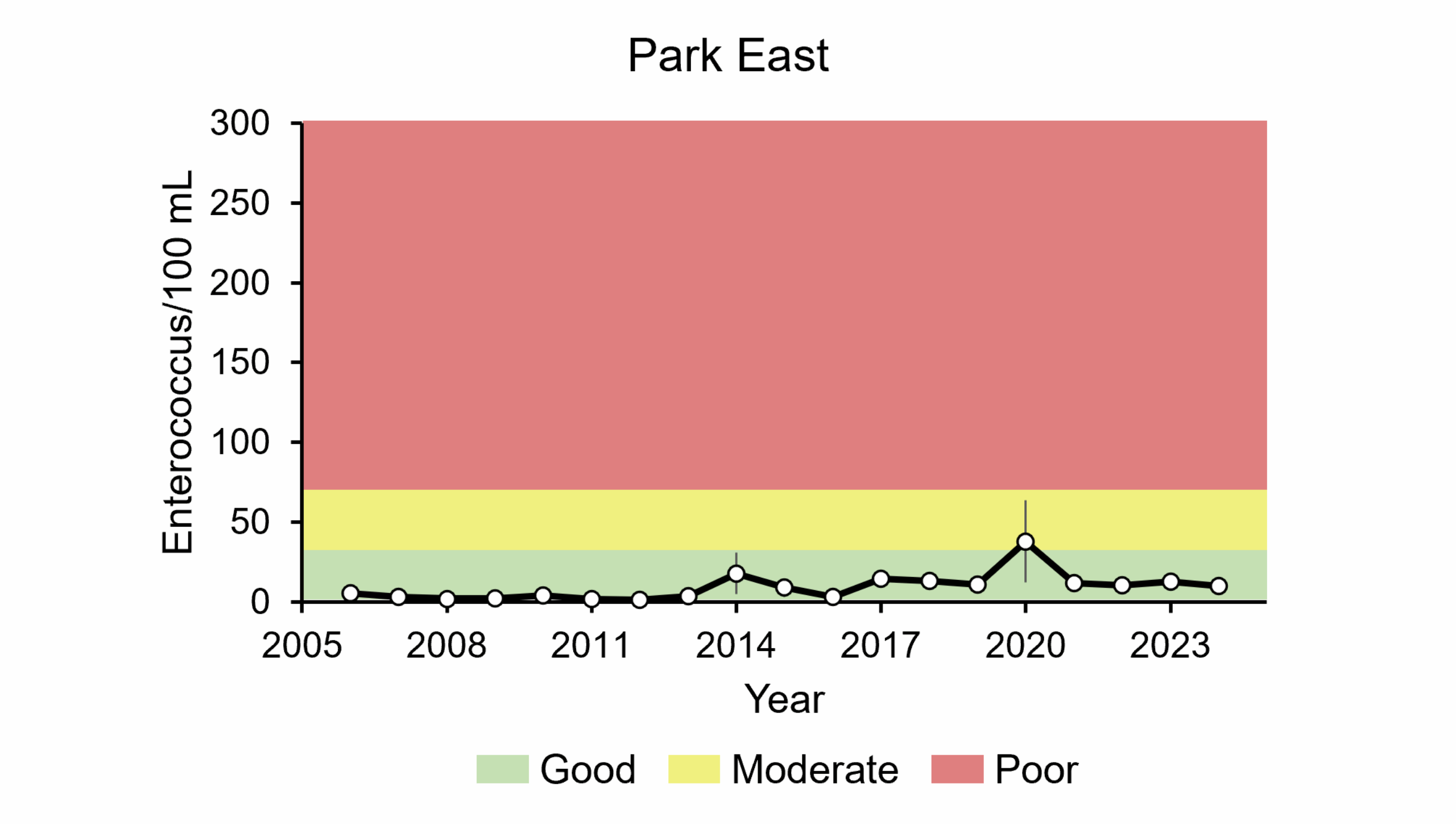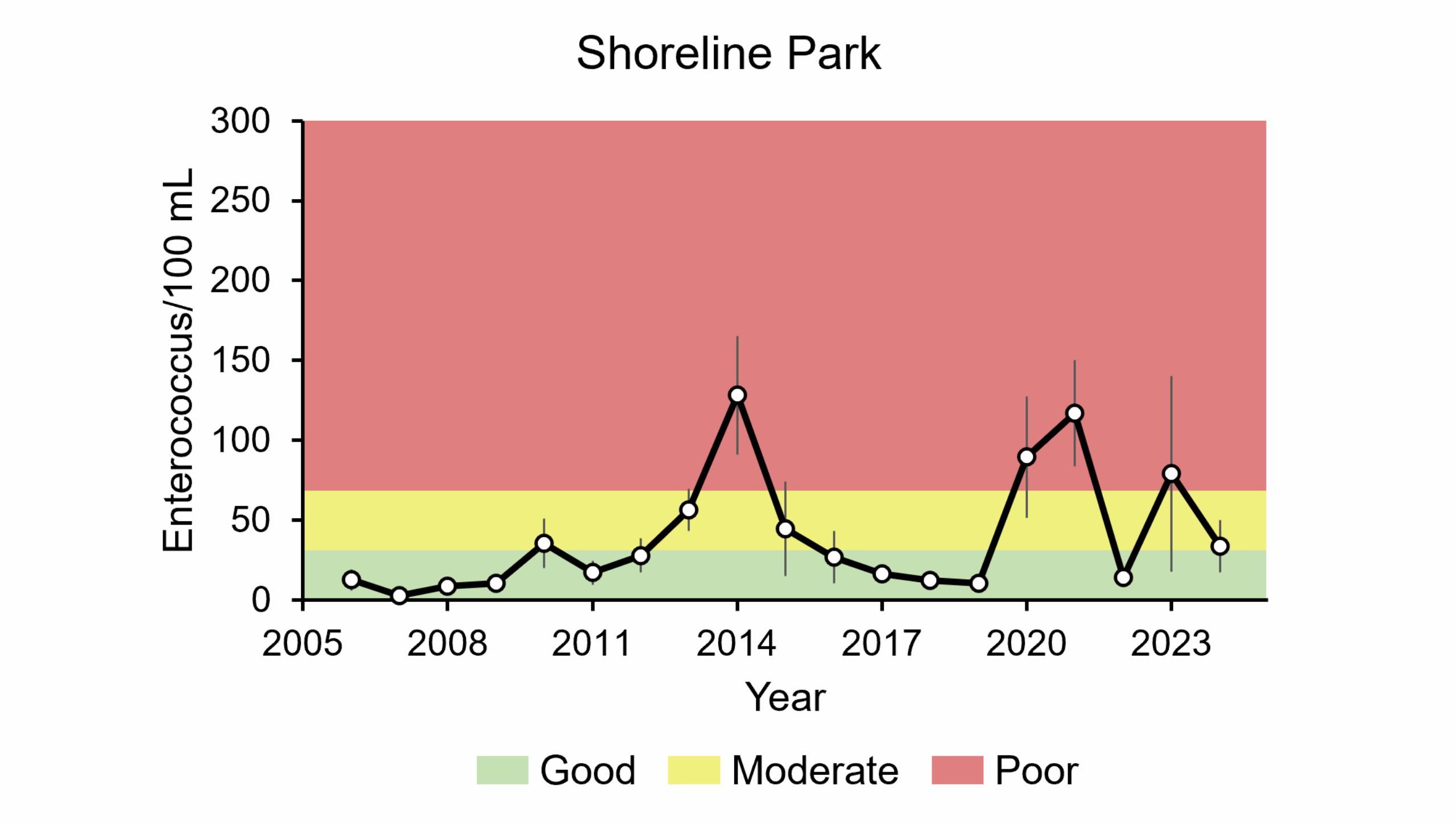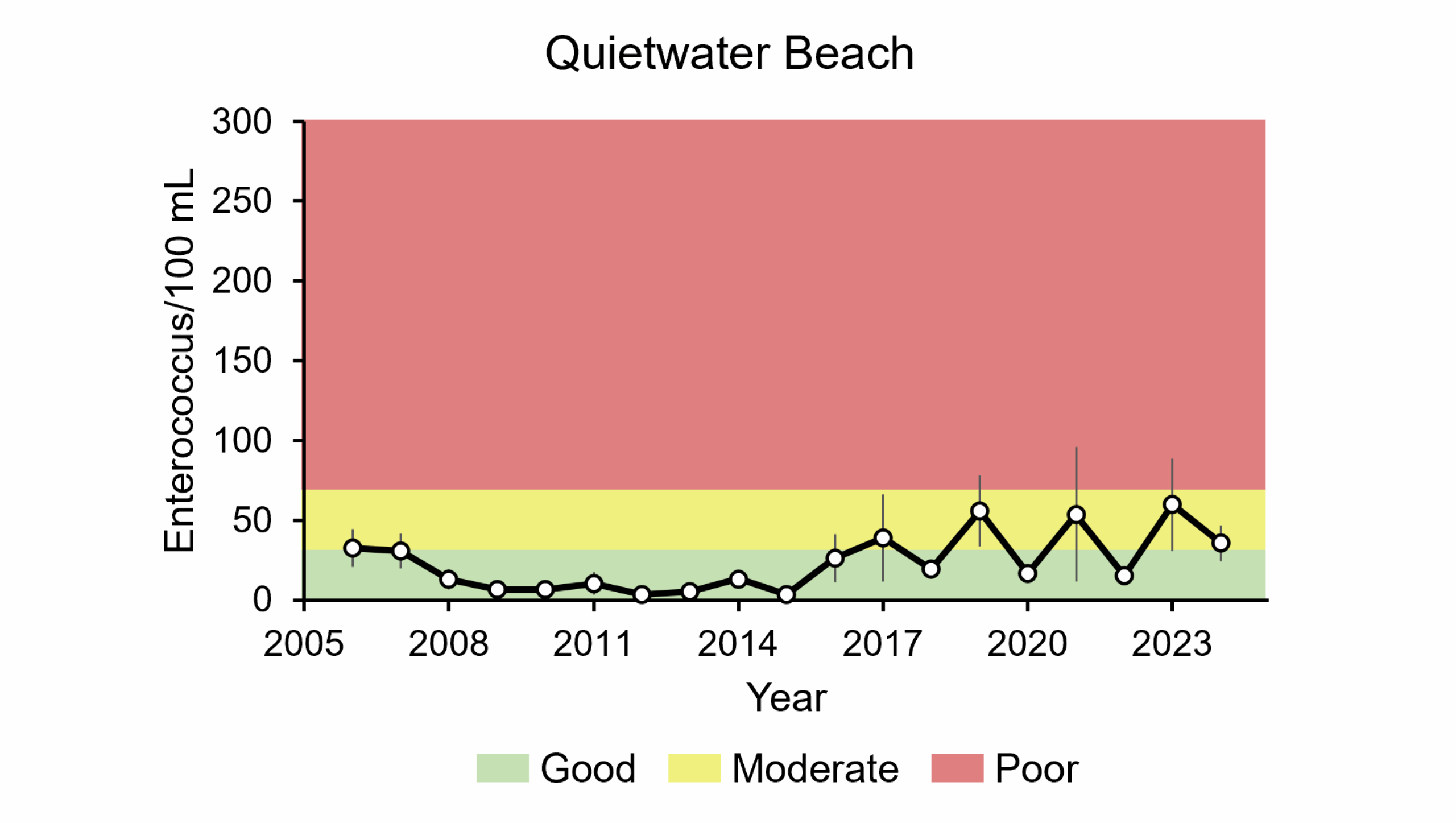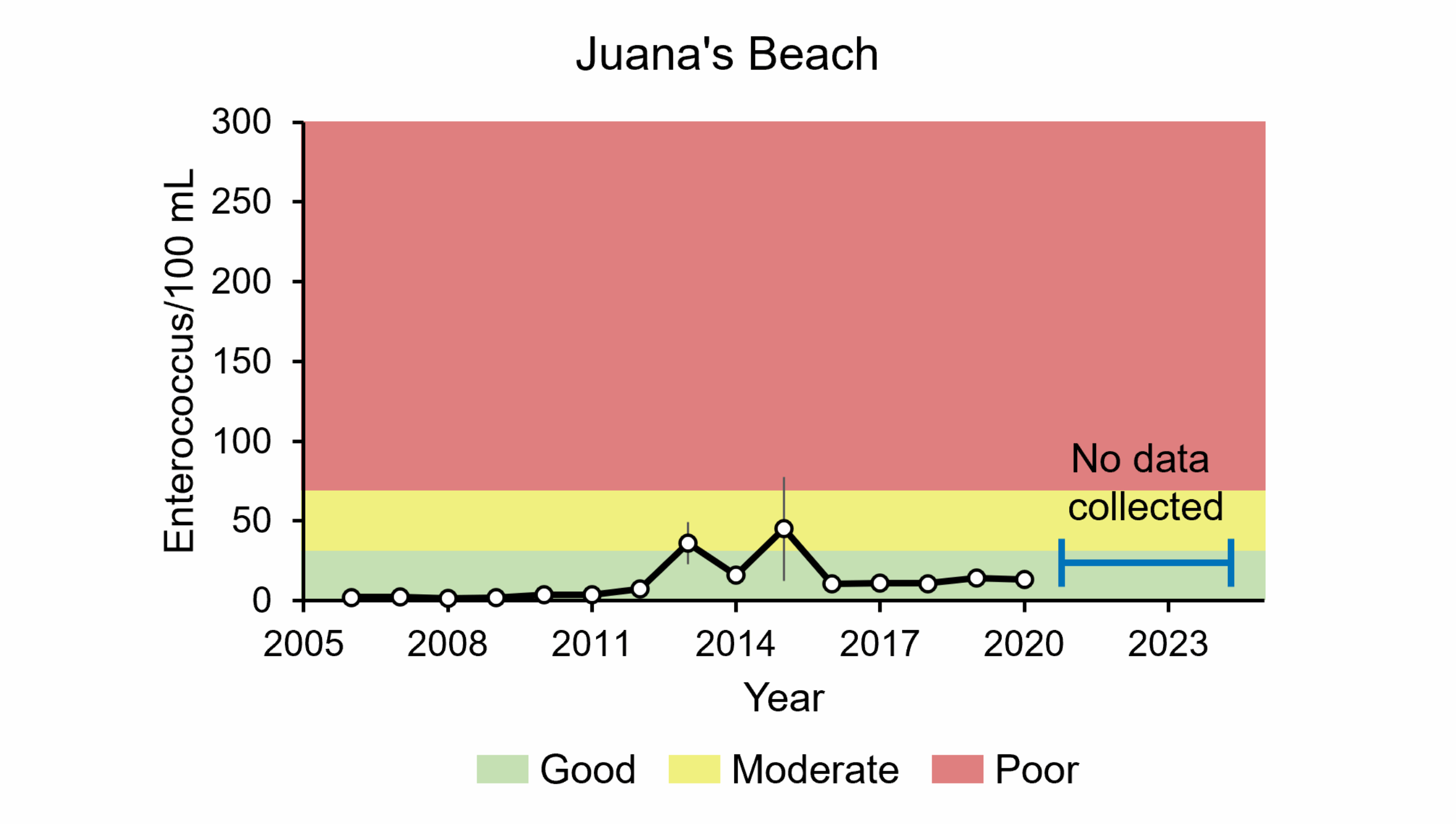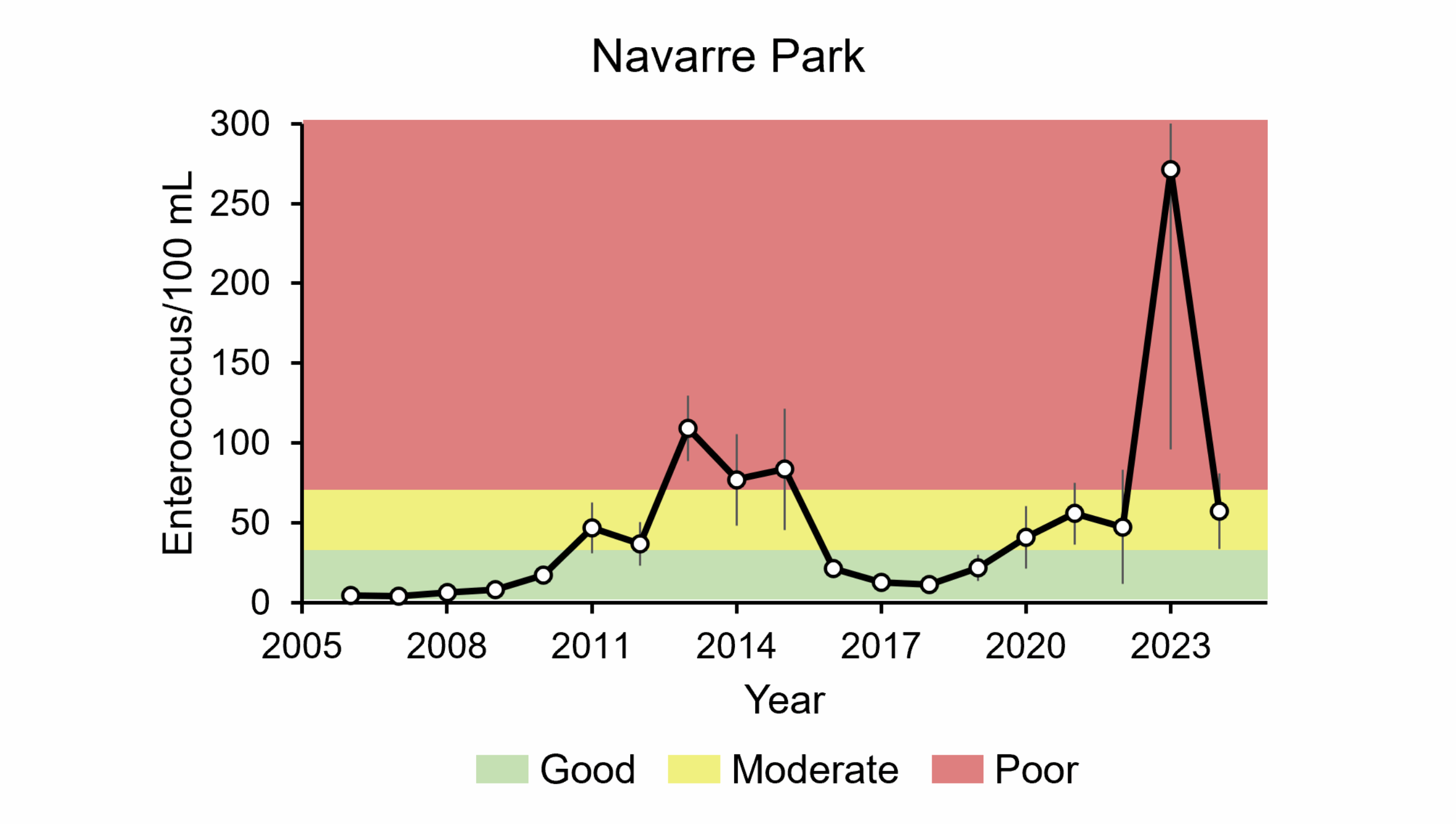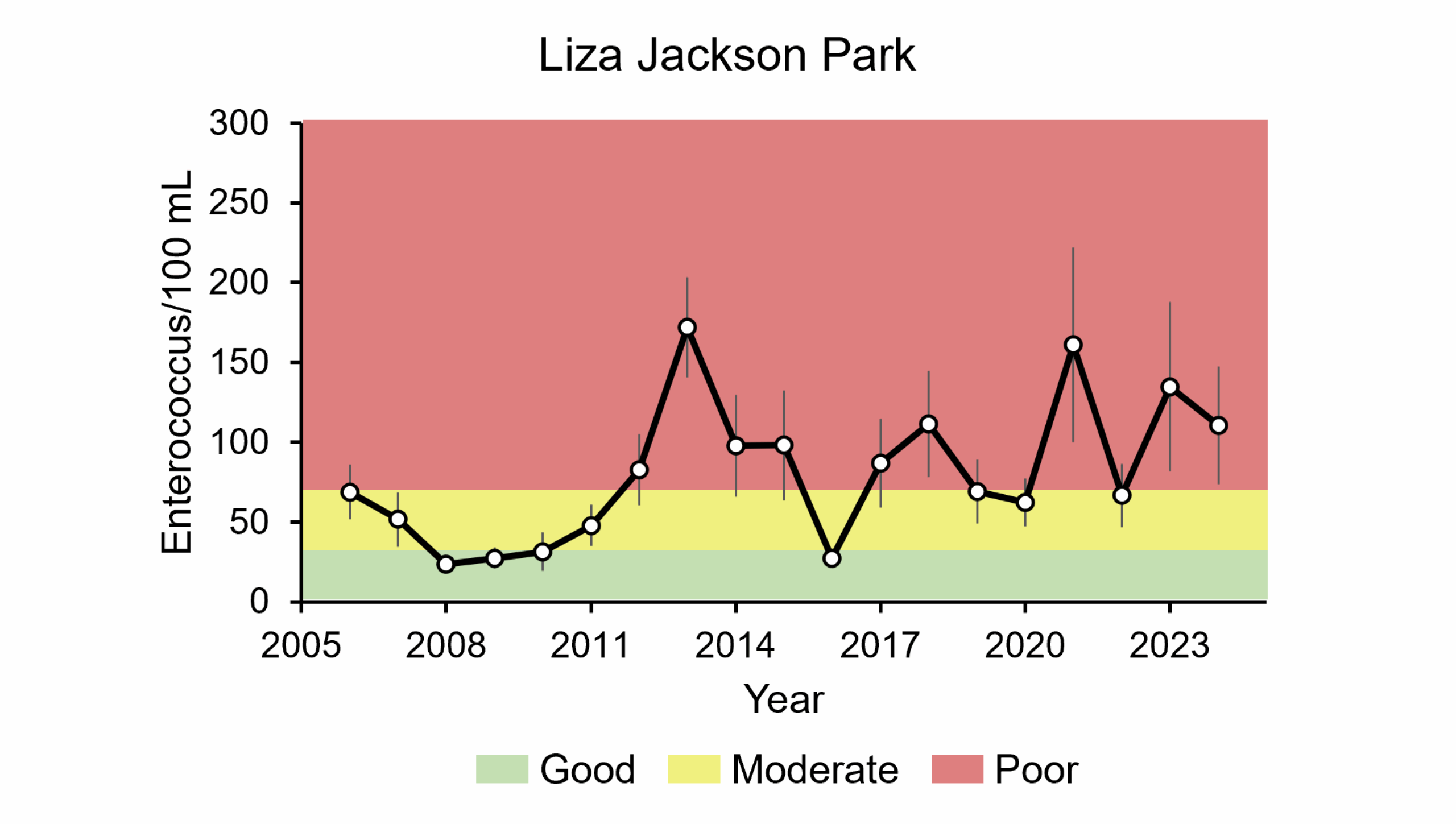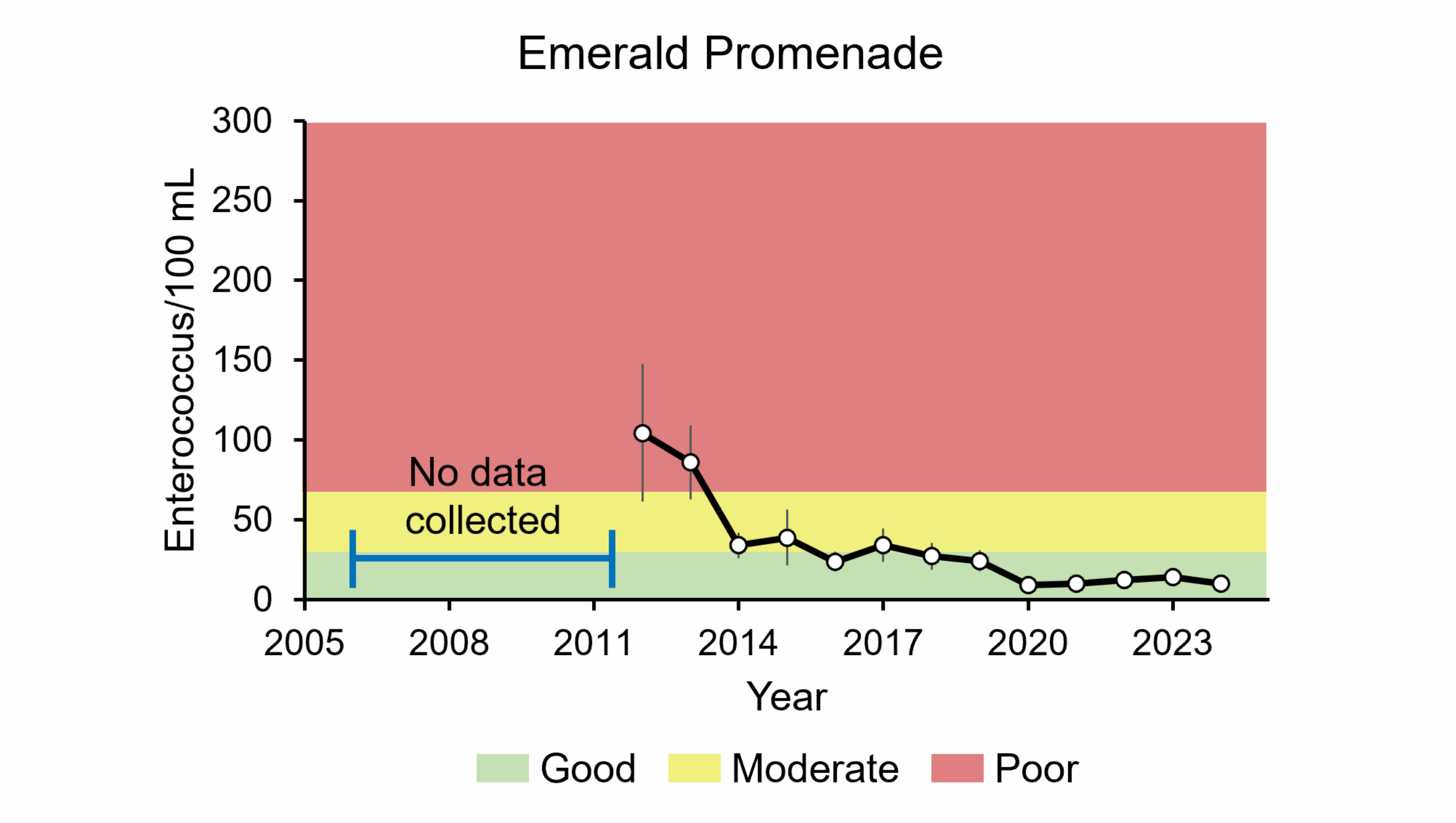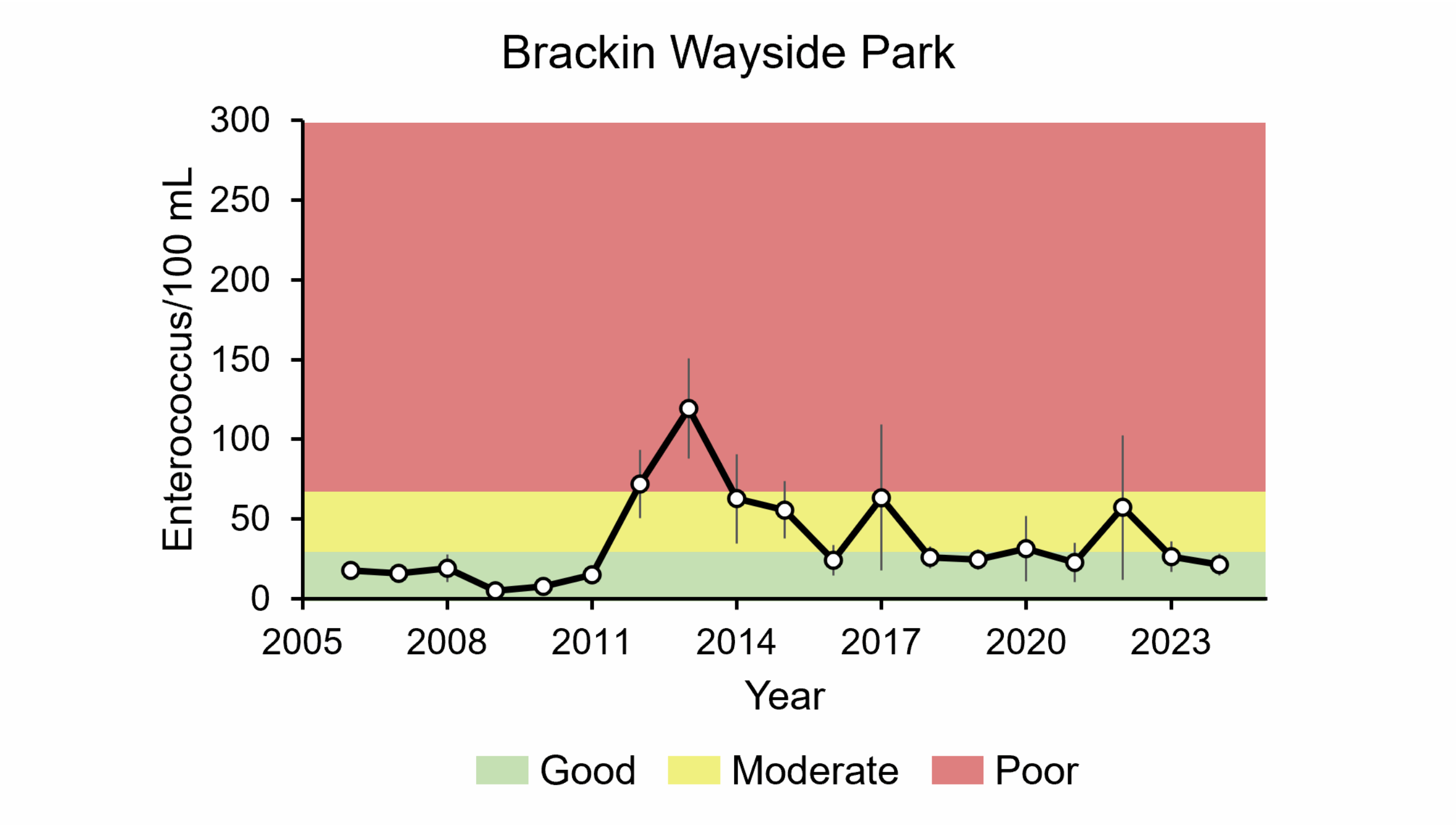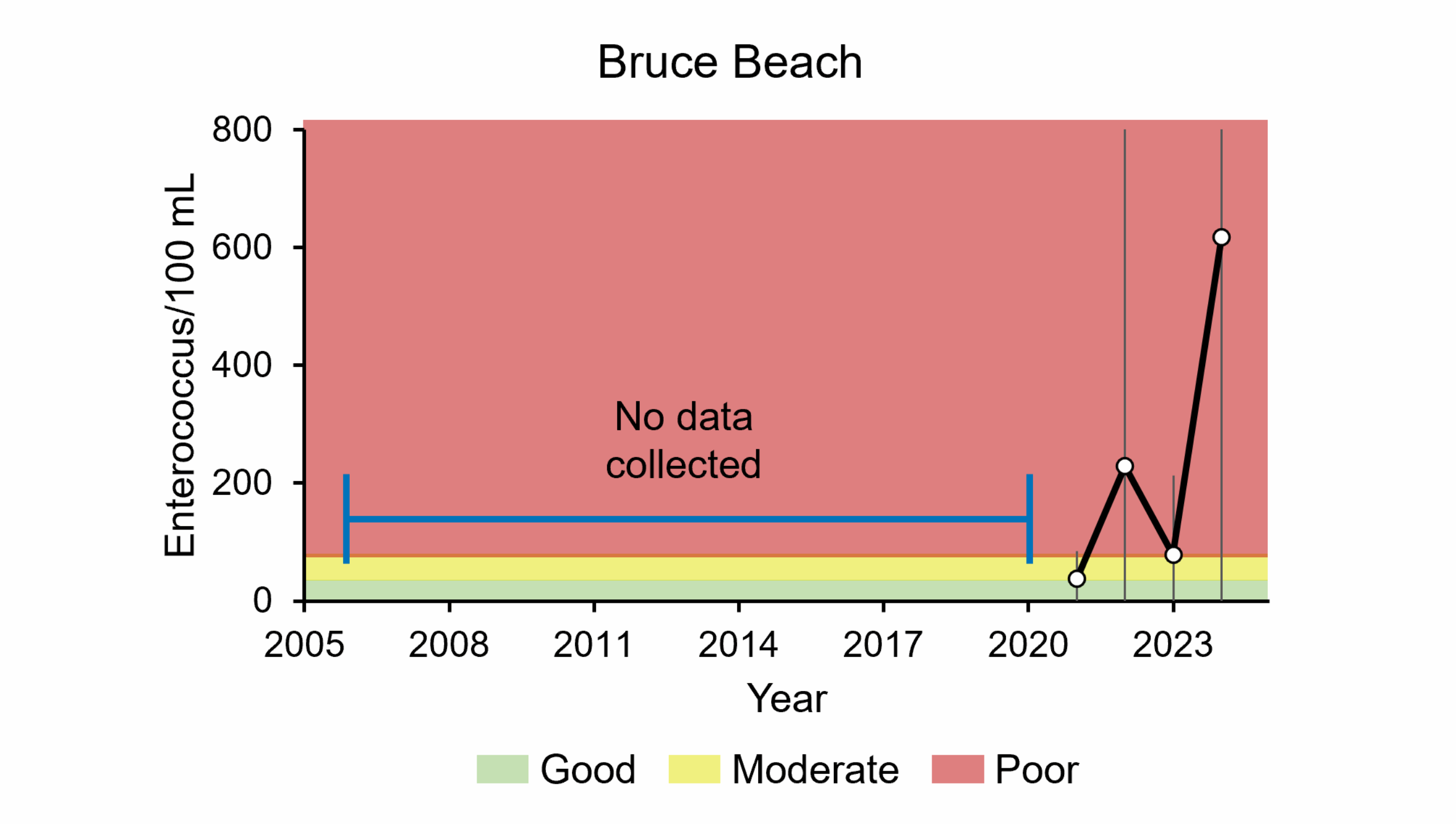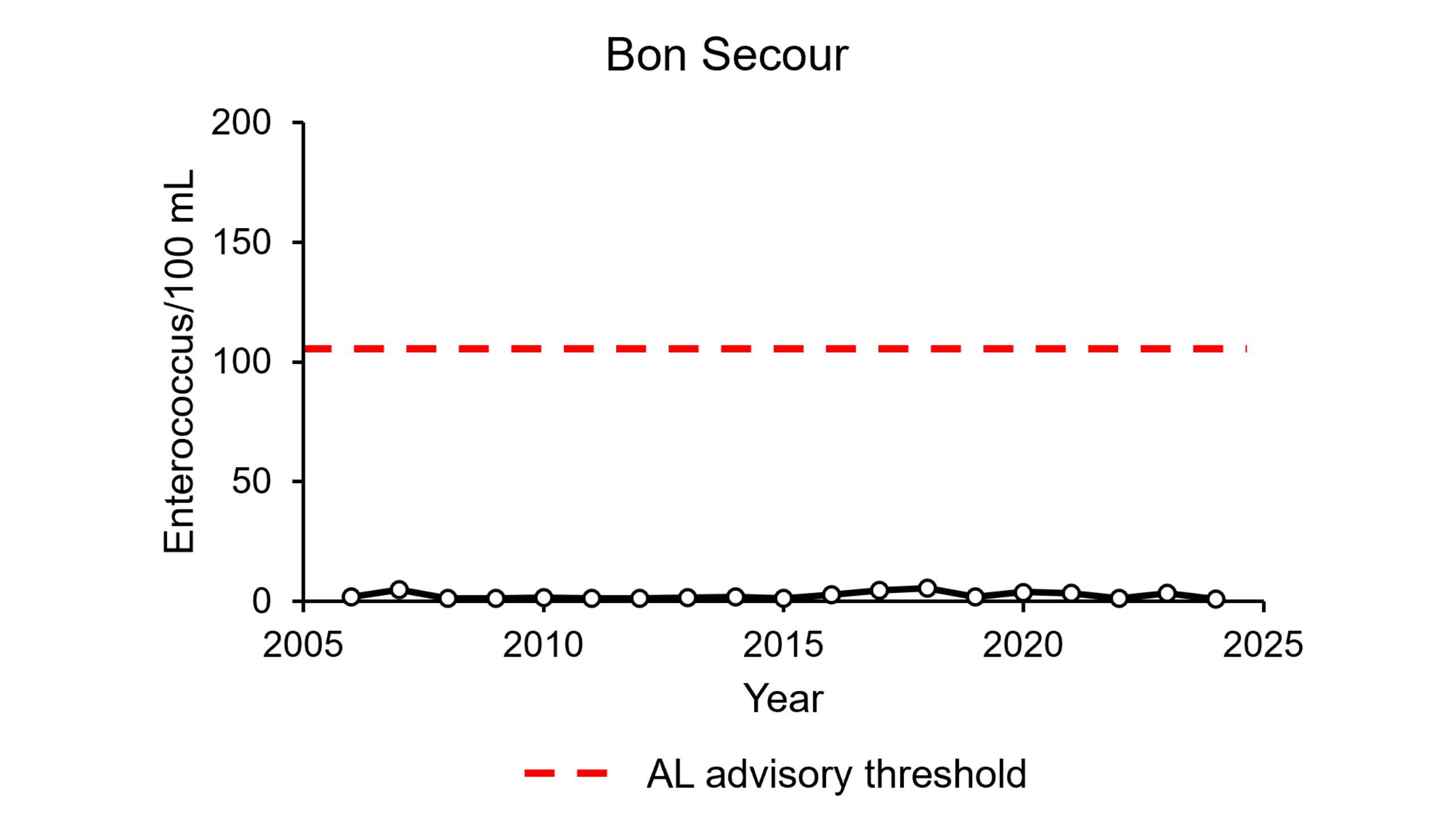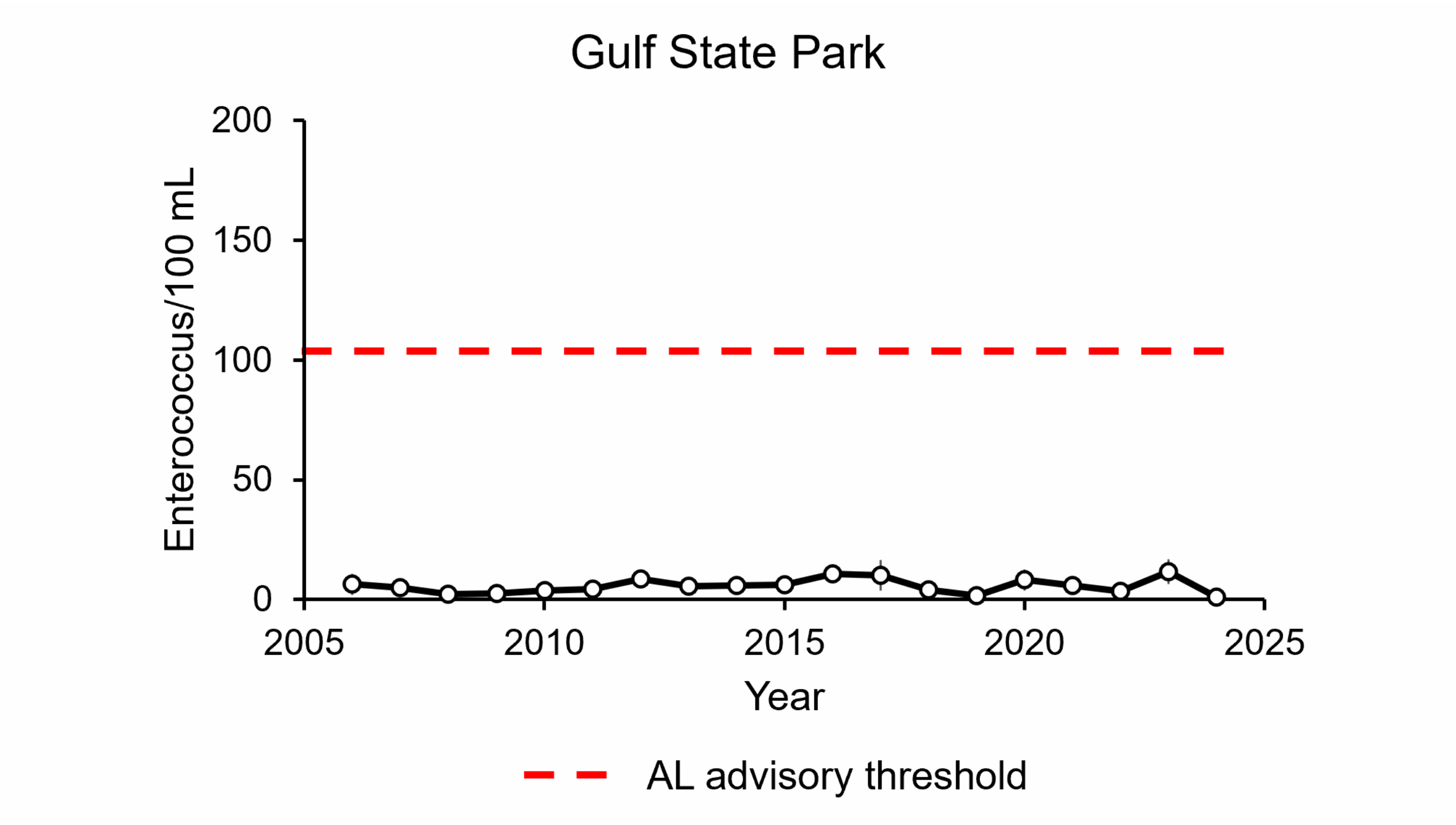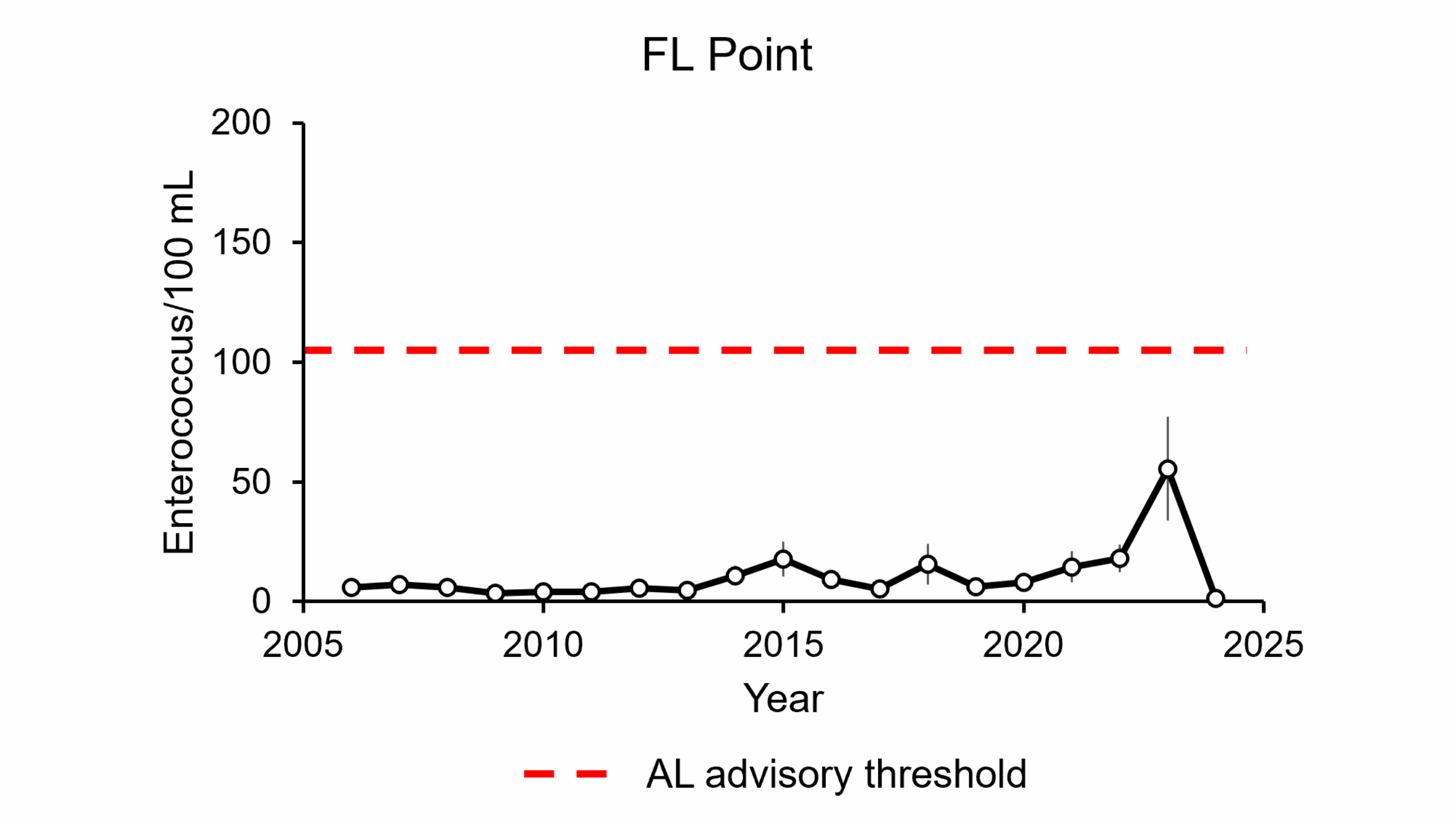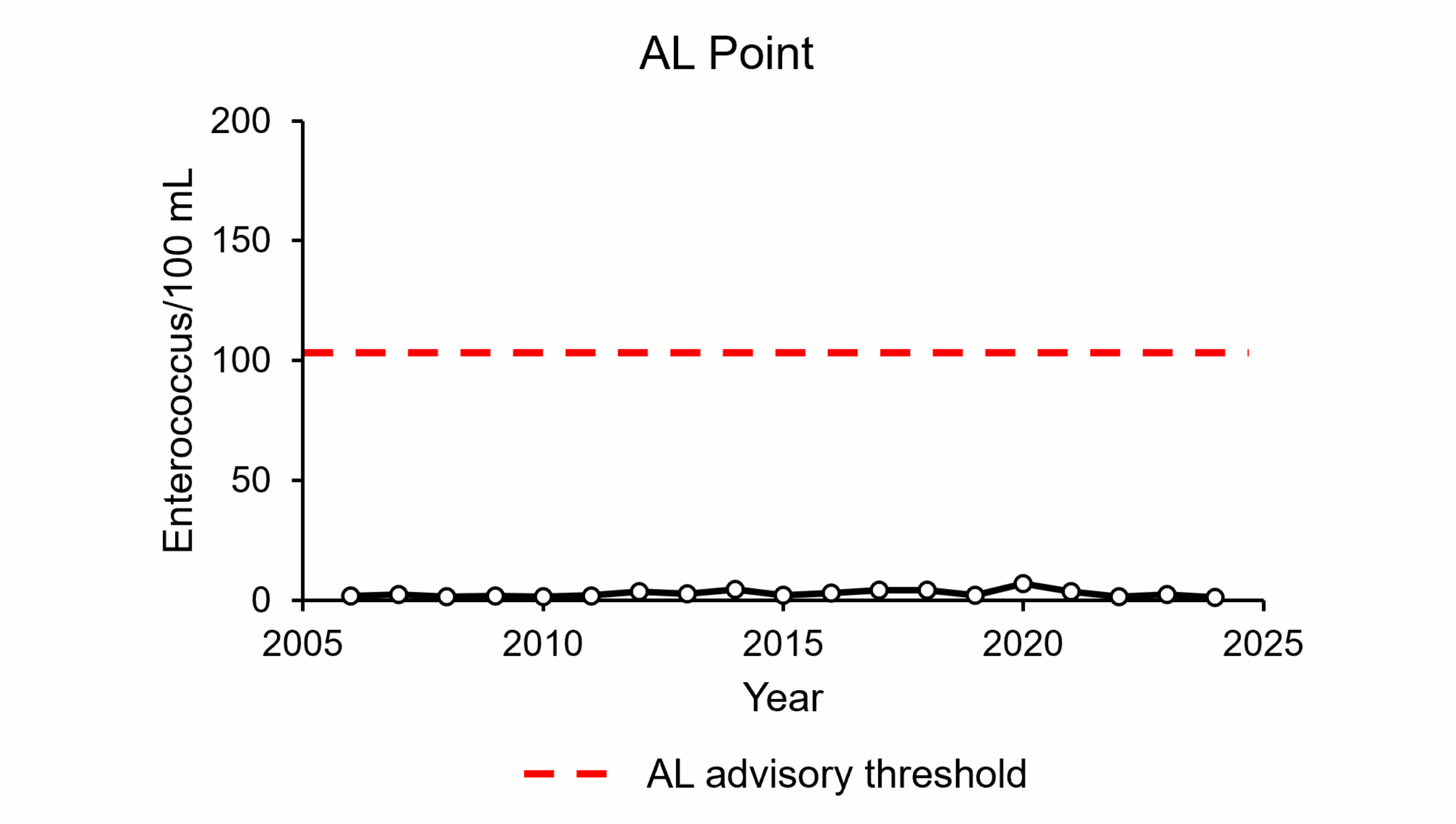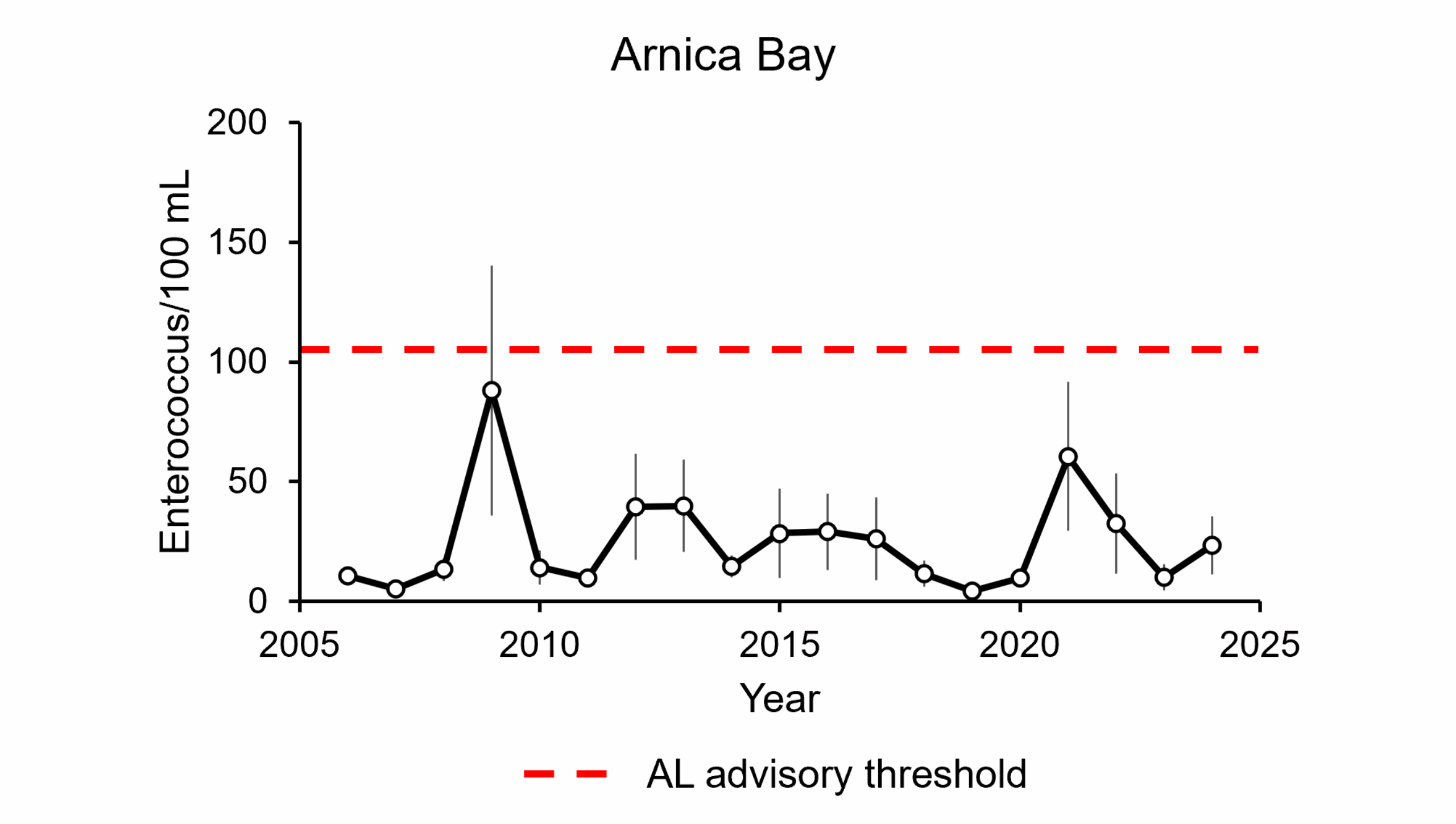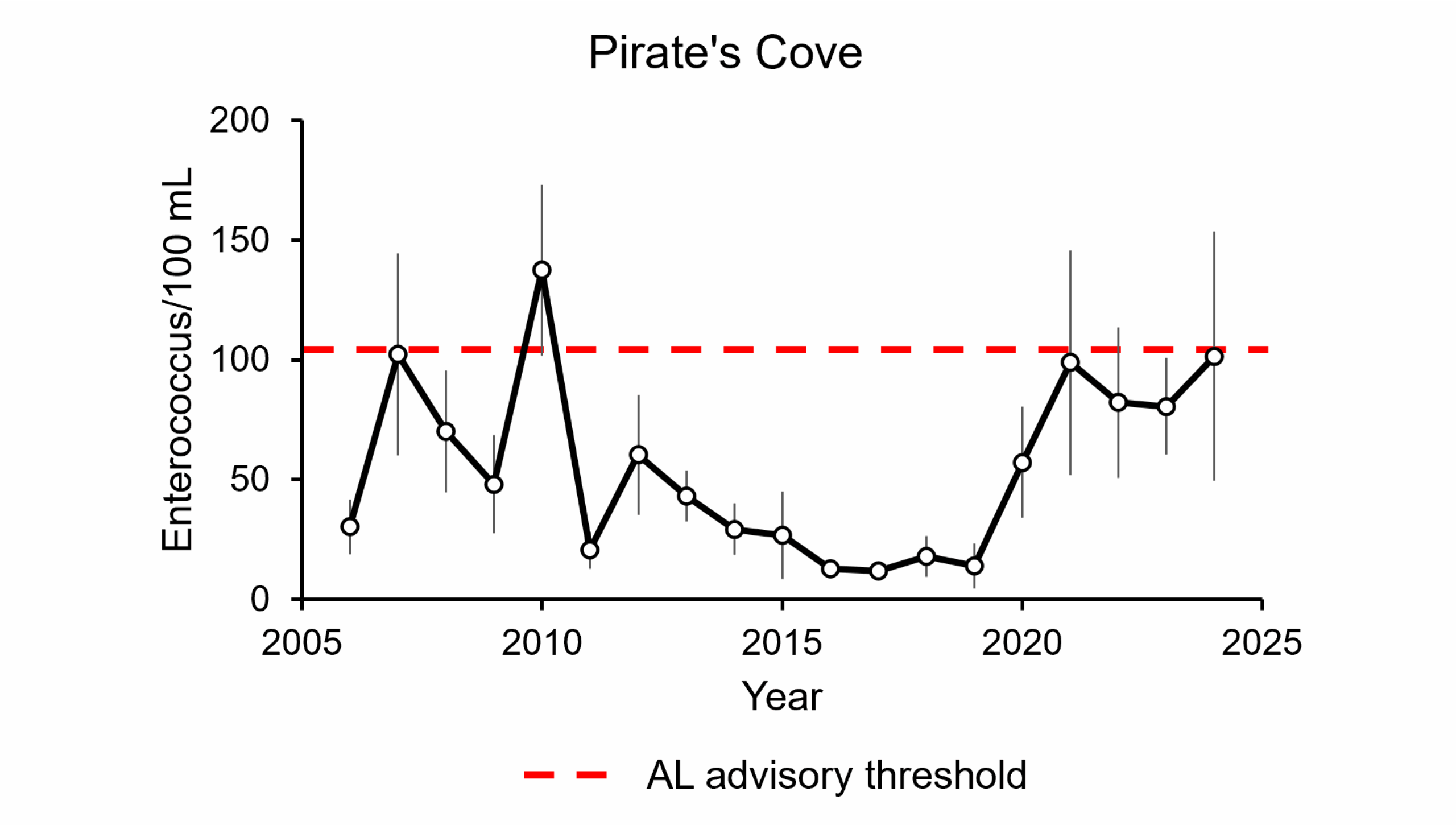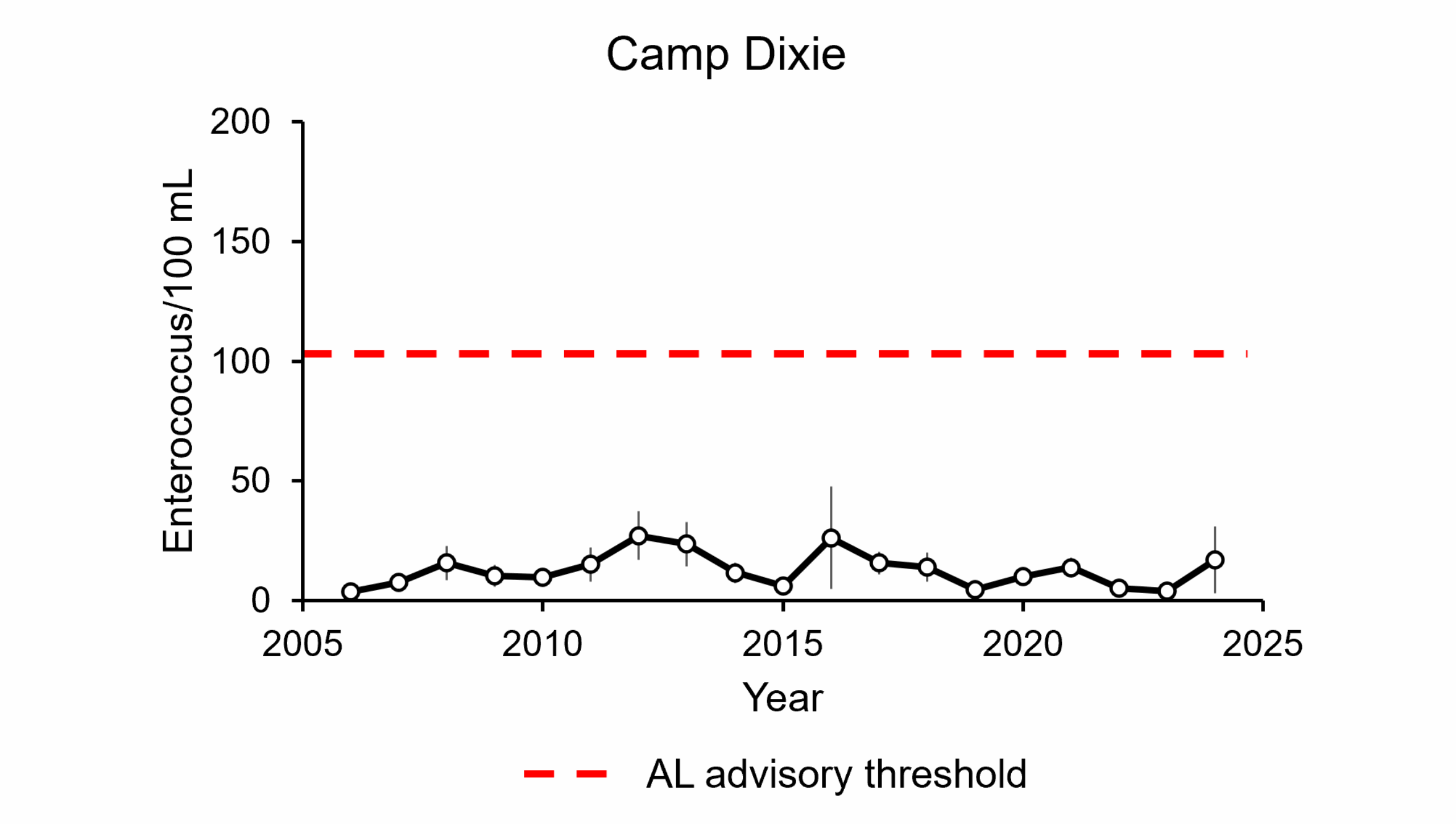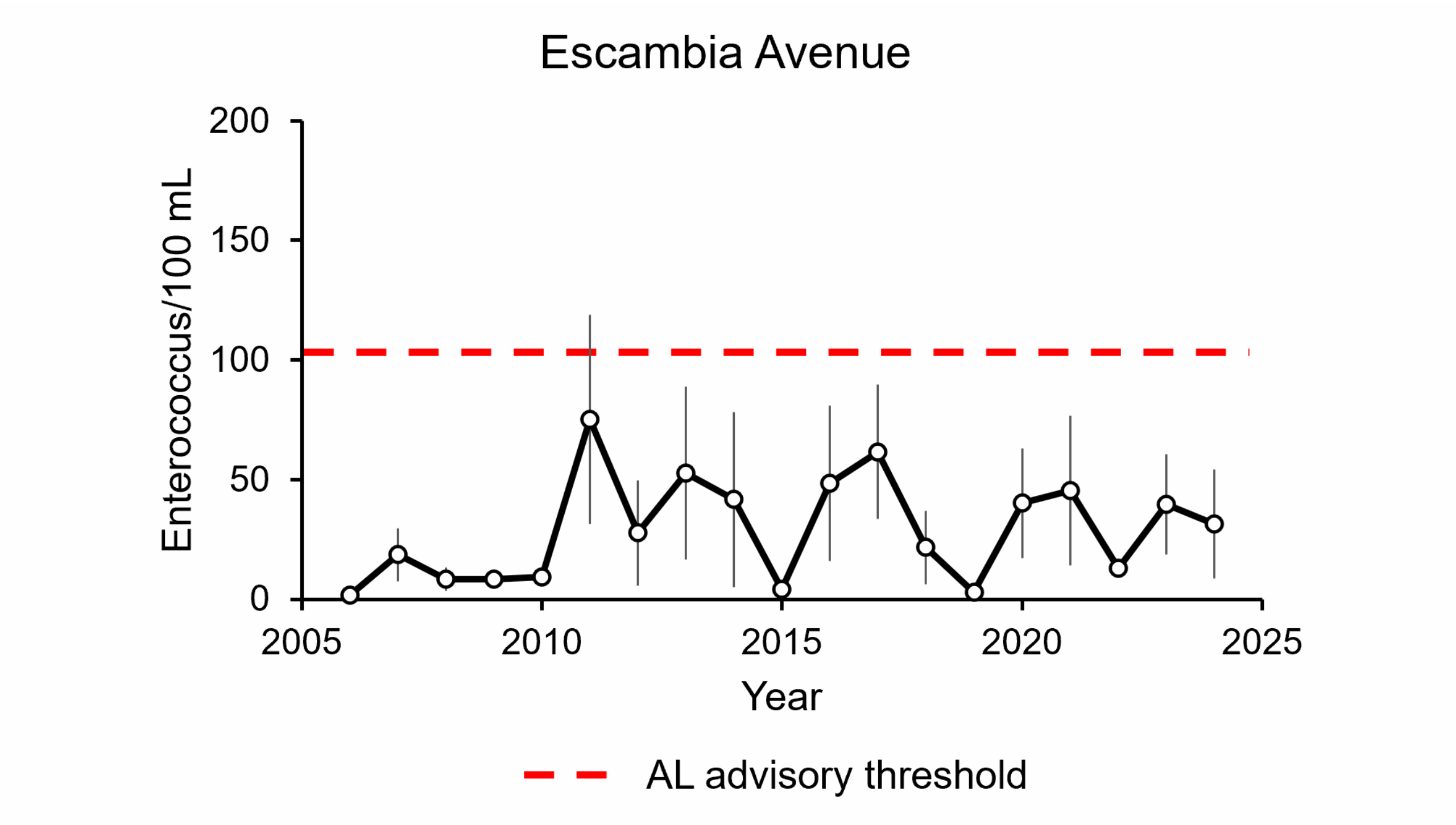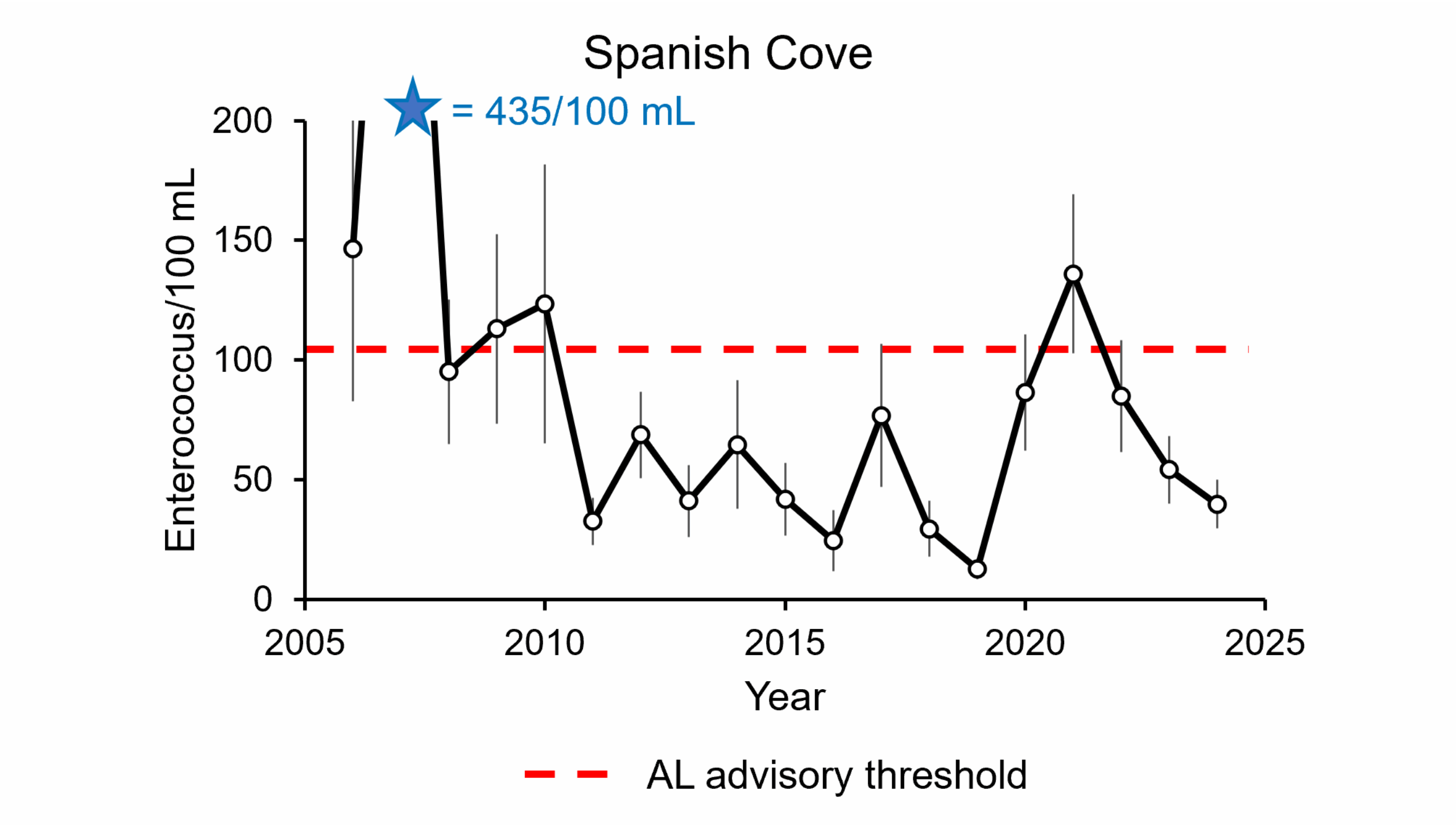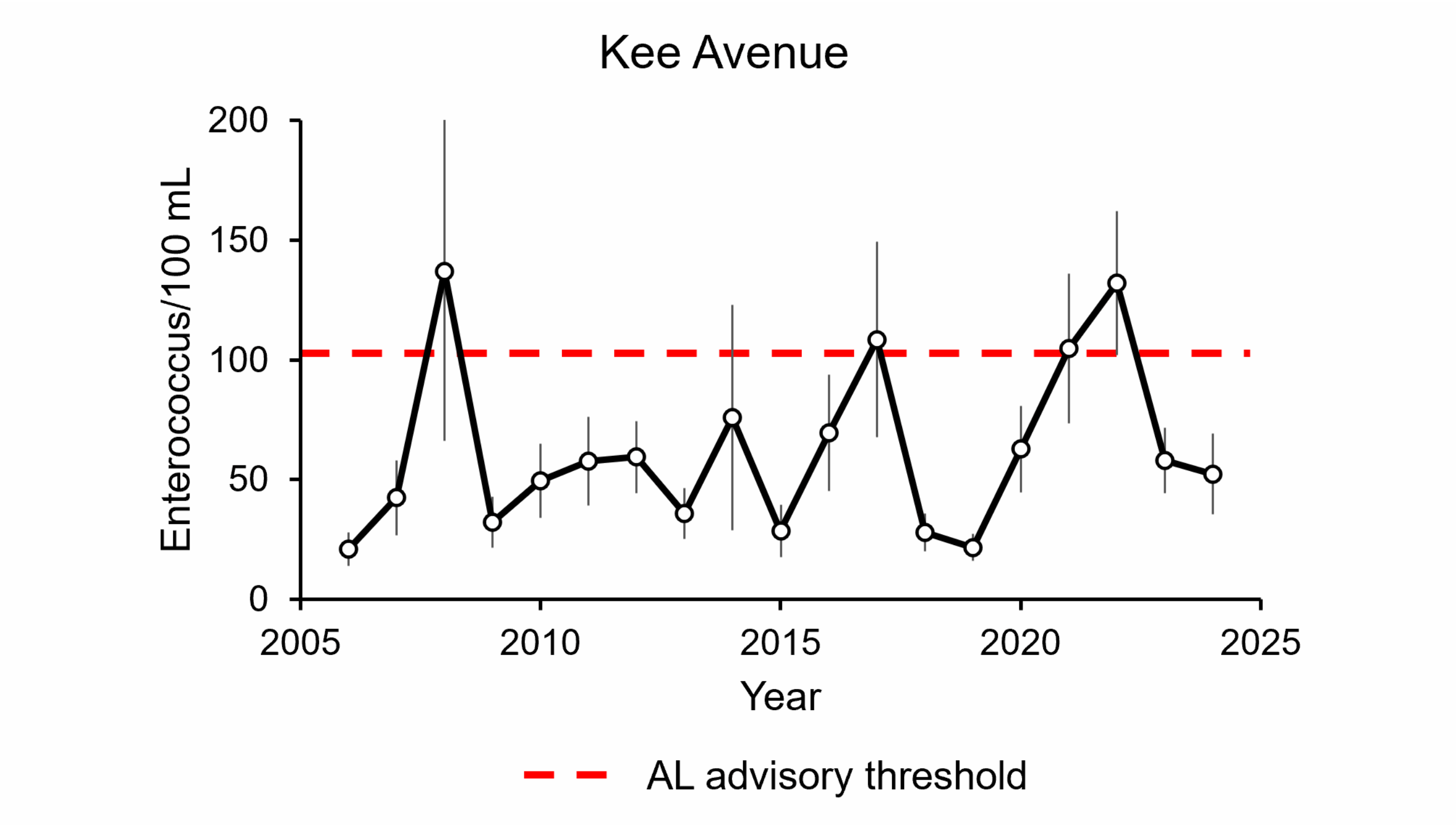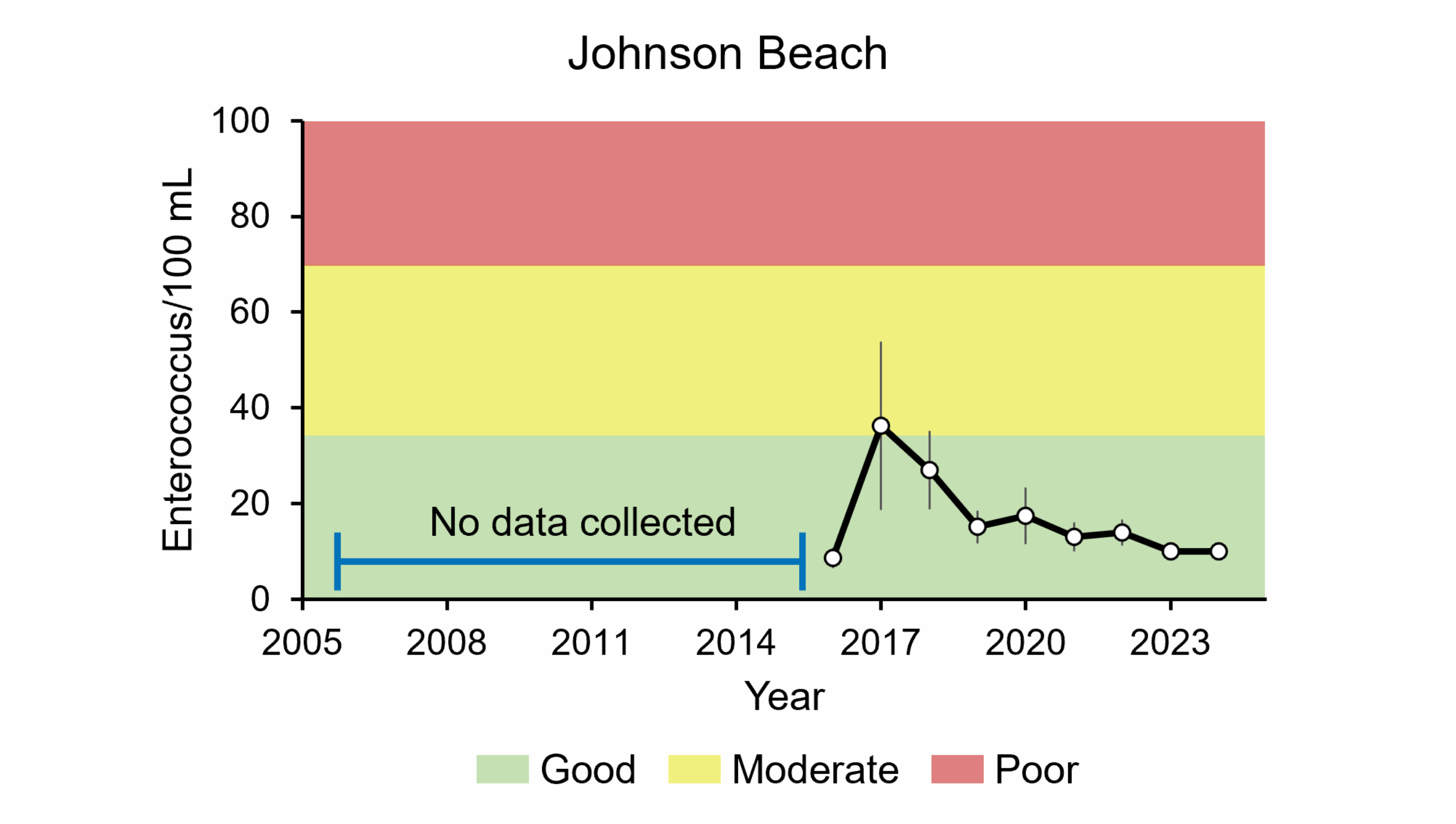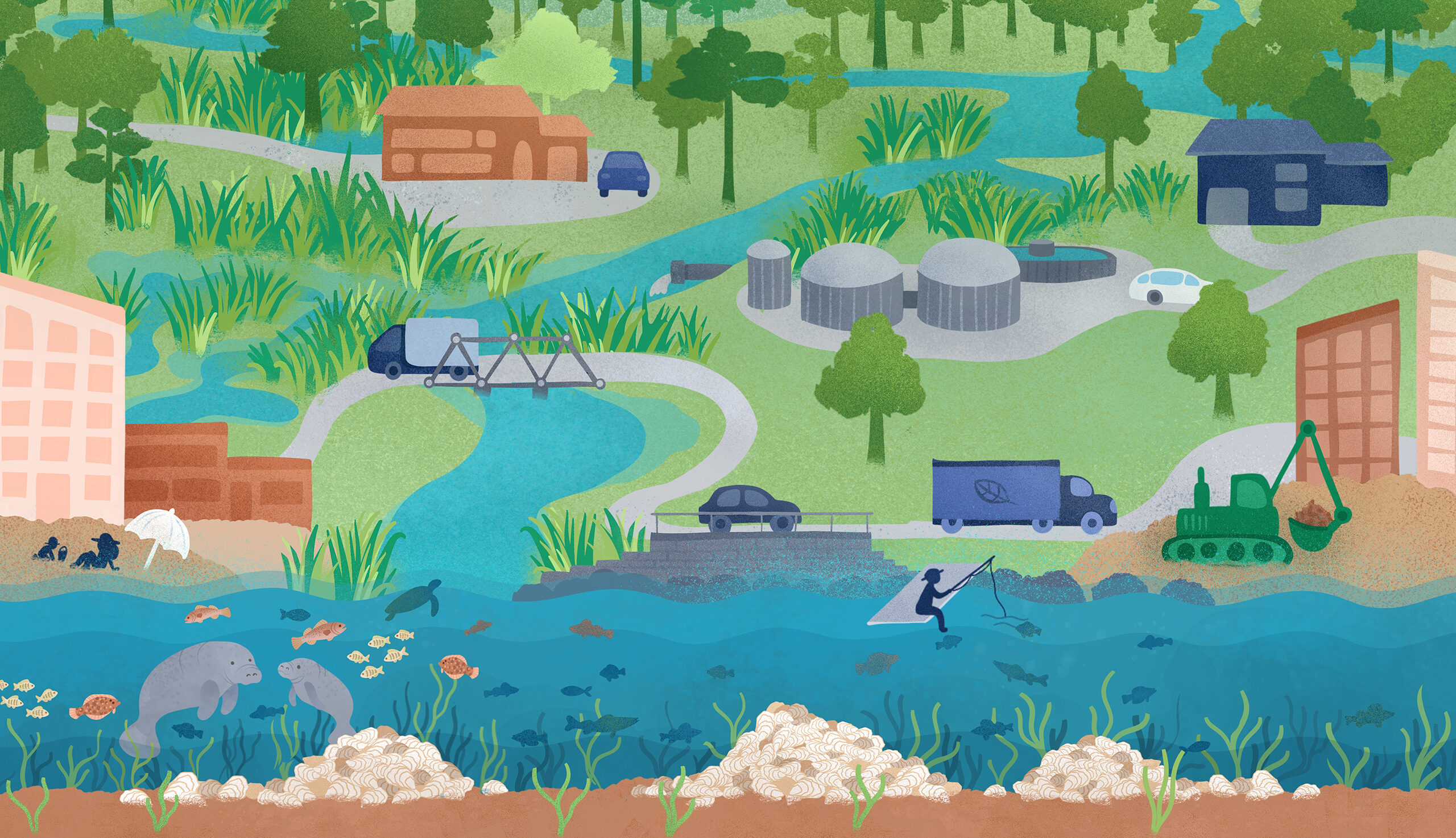

Bacteria in our Watersheds
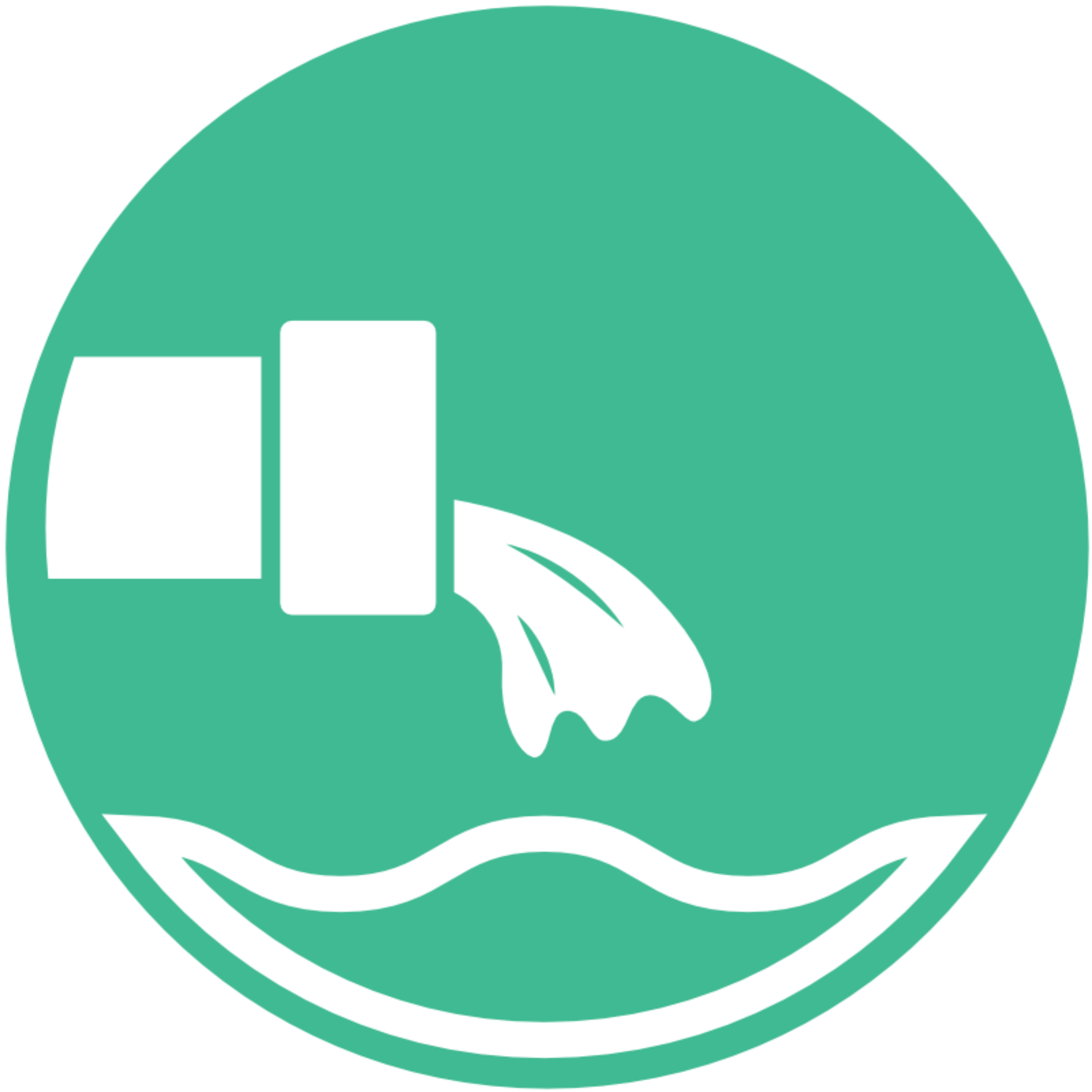
Sanitary Sewer Overflows:
Stormwater and sewer failures overwhelm the wastewater drainage system causing sewage spills that can threaten human health.
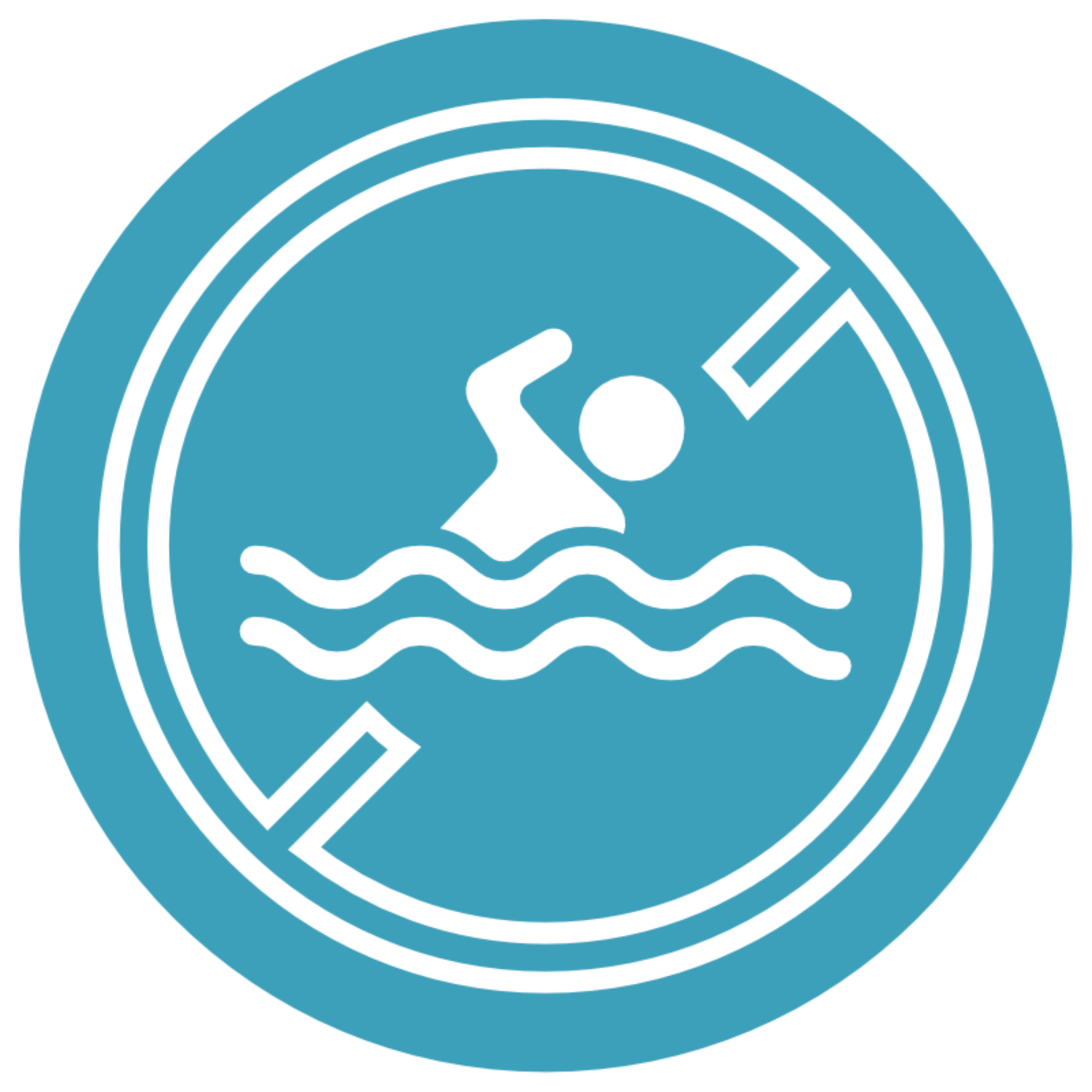
Beach Advisories:
High levels of fecal bacteria in the water results in beach advisories, which serve to notify the public of current health risks.
Pensacola Bay Watershed
Beach Advisories
Beach advisories are issued by the Department of Health when bacteria associated with fecal material are found in high concentrations. The indicator bacteria for saltwater is Enterococcus, which exists in the guts of warm blooded animals, including humans. High bacterial concentrations can be an indication of sewage spills, leaching septic tanks, wastewater discharges, or waste from wildlife or domestic animals.
- Compared to gulf front beaches, beaches within the sound, bayous, and bays had higher number of days under advisory
- This is likely due to sound and bay beaches that have less dilution then gulf front beaches
- Our urban bayous (Grande, Chico, Texar) have frequently exceeded fecal standards over the past 15 years
- Bruce Beach has extremely high enterococcus concentrations likely due to aging infrastructure and drainage from large areas of impervious surfaces
bacteria monitoring
The Florida Department of Health’s (FDOH) Healthy Beaches Program routinely monitors swimming beaches for enterococcus.
- Monitoring began at most sites in 2006
- Bruce Beach monitoring began in 2021
- Juana’s Beach has not been monitored since 2020
- Navarre Beach West experienced its first advisory in 2022
- Navarre Park experienced high bacterial concentrations during the summer of 2023
- The total number of sites monitored is dependent on funding
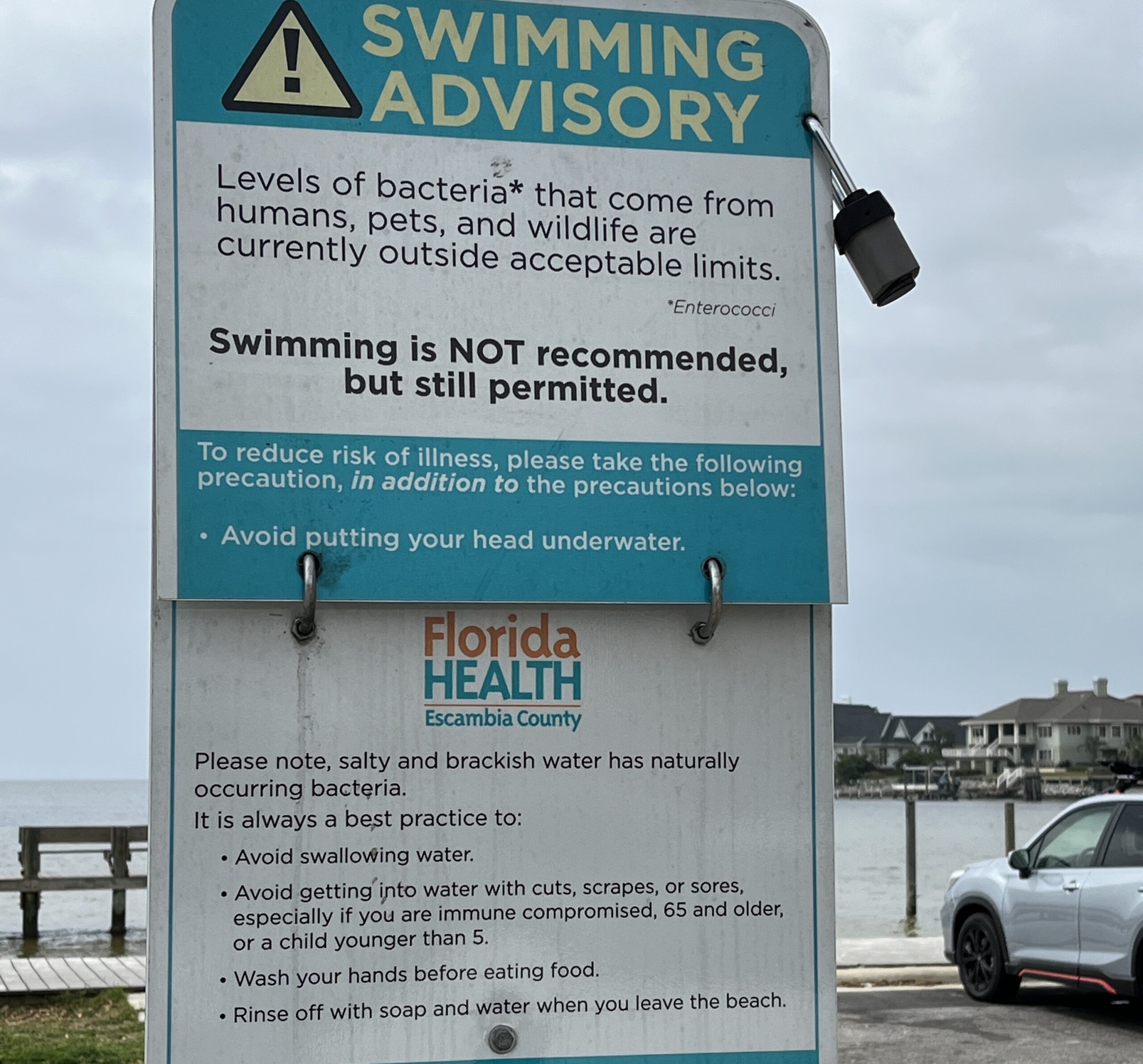
Photo: PPBEP
help keep the bay clean!
- Support wastewater infrastructure improvements
- Scoop the poop! Pick up after your furry friends
- Boat responsibly: Pump out, don’t dump out
- Maintain your septic tanks and lateral lines
Sanitary Sewer Overflows
Sanitary sewers are underground pipes built to transport sewage to wastewater treatment plants. Stormwater runoff can overwhelm these systems during heavy rain events, causing sanitary sewer overflows (SSOs) that release untreated wastewater into the environment. Additional causes of SSOs are blockages, line breaks, and power failures.
- SSOs hotspots are located within city centers
- Excess rainfall, line breaks, FOG (fat oil and grease), construction activity, and power or equipment failures are commonly reported causes
- SSOs can be reported directly by local utilities or members of the public. Some SSOs go unnoticed and are underreported
- In 2024, 79 SSOs spilled 2.2 million gallons of wastewater into our waterways
- In 2023, 79 SSOs spilled 1.5 million gallons of wastewater into our waterways
- In 2022, 72 SSOs spilled 350,000 gallons of wastewater into our waterways
- Graveyard Branch (located in Ferry Pass) experienced a high number of SSO events in 2024 due to multiple failures in the aging infrastructure. ECUA began emergency repairs in May of 2023. Over 20,600 feet of pipe is being replaced at a total cost of $7.8 million. The repairs are anticipated to be completed by July 31, 2025.
reporting sanitary sewer overflows
SSOs are reported to the FL Department of Environment Protection (DEP) State Watch Office (1-800-320-0519) or the AL Department of Environmental Management (ADEM, 334-274-4200), depending on the location of the spill. DEP requires utilities to report spills >1,000 gallons. Spills <1,000 gallons are reported to the utilities’ delegated local program. ADEM has no restrictions on gallons reported.
Perdido Bay Watershed
Beach Advisories
Beach advisories are issued by the Department of Health when bacteria associated with fecal material are found in high concentrations. The indicator bacteria for saltwater is Enterococcus, which exists in the guts of warm blooded animals, including humans. High bacterial concentrations can be an indication of sewage spills, leaching septic tanks, wastewater discharges, or waste from wildlife or domestic animals.
- Compared to gulf front beaches, beaches within the upper bay had higher number of days under advisory
- Enterococcus concentrations have decreased at Little Lagoon, Wolf Bay, Spanish Cove, and Kee Avenue, indicating an improvement in water quality
Bacteria monitoring
The Florida Department of Health’s (FDOH) Healthy Beaches Program and the Alabama Departments of Environmental Management’s and Public Health’s (ADEM and ADPH) Coastal Alabama Beach Monitoring Program routinely monitor swimming beaches for enterococcus.
- Both programs have been monitoring since 2006
- The total number of sites monitored is dependent on funding
- FL protocol: when a sample >71 colonies/100 mL is found, a resample is taken the following day. If the subsequent sample is >71 colonies/100 mL an advisory is issued. The next sample is taken during the next monitoring event (every 2 weeks during the swimming season, and once a month during the cold season)
- AL protocol: when a sample >104 colonies/100 mL is found, that location is resampled every day until the sample is below the threshold. As of May of 2024, ADEM switched their lab methods. Only data through April or 2024 was utilized for this report.
- Because FL waits 2-weeks to resample, a beach may remain under advisory even if water quality has improved
- Due to different sampling thresholds in FL and AL, a beach that had 75 colonies/100 mL would be under a beach advisory in FL, but not in AL
- This makes it difficult to compare FL and AL beaches based on number of advisories alone
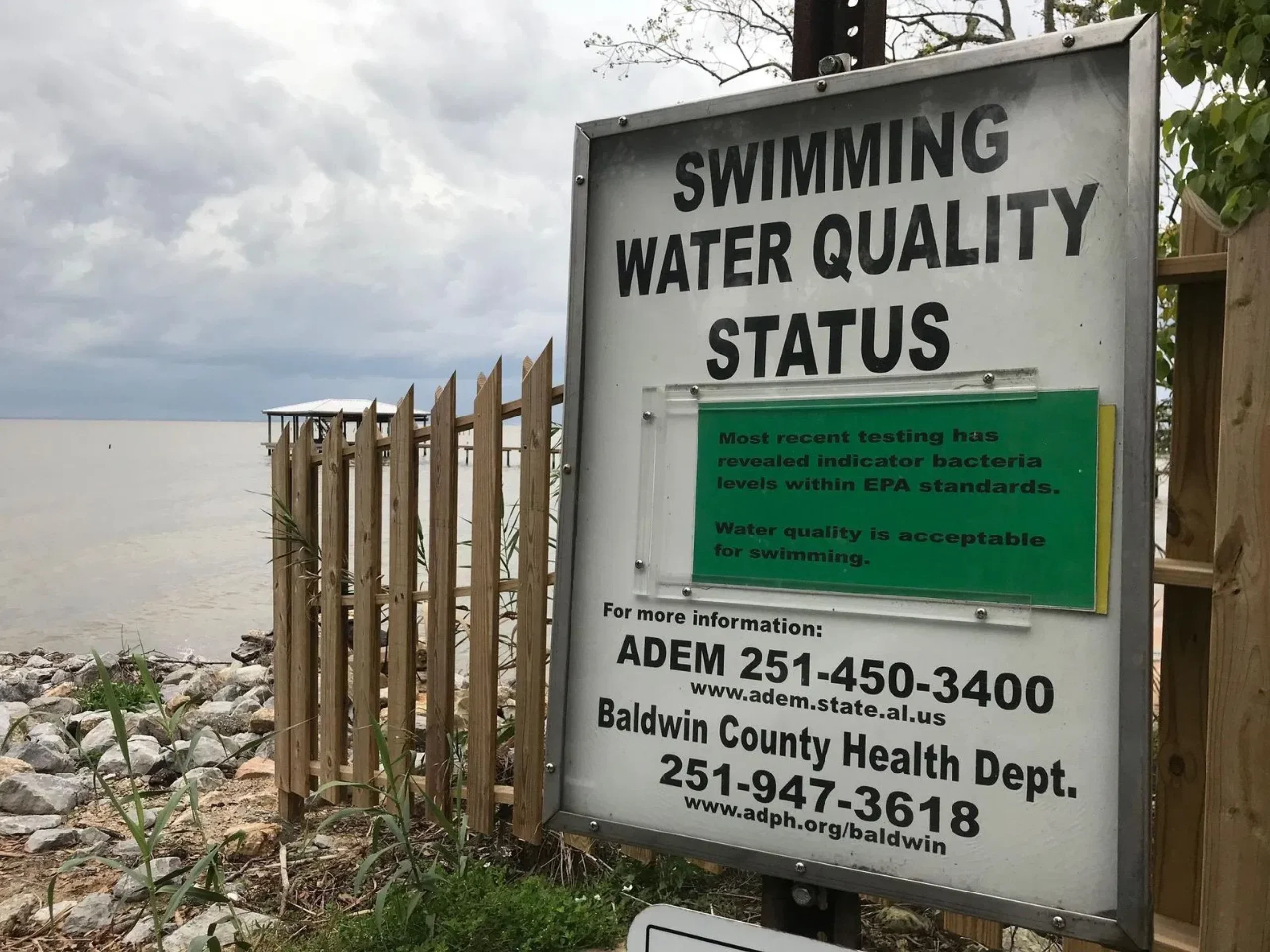
help keep the bay clean!
- Support wastewater infrastructure improvements
- Scoop the poop! Pick up after your furry friends
- Boat responsibly: Pump out, don’t dump out
- Maintain your septic tanks and lateral lines
Sanitary Sewer Overflows
Sanitary sewers are underground pipes built to transport sewage to wastewater treatment plants. Stormwater runoff can overwhelm these systems during heavy rain events, causing sanitary sewer overflows (SSOs) that release untreated wastewater into the environment. Additional causes of SSOs are blockages, line breaks, and power failures.
- SSOs hotspots are located within city centers
- Excess rainfall, line breaks, FOG (fat oil and grease), construction activity, and power or equipment failures are commonly reported causes
- SSOs can be reported directly by local utilities or members of the public. Some SSOs go unnoticed and are underreported
- In 2024, 52 SSOs spilled 300,000 gallons of wastewater into our waterways
- In 2023, 45 SSOs spilled 1.1 million gallons of wastewater into our waterways
- In 2022, 68 SSOs spilled 400,000 gallons of wastewater into our waterways
reporting sanitary sewer overflows
SSOs are reported to the FL Department of Environment Protection (DEP) State Watch Office (1-800-320-0519) or the AL Department of Environmental Management (ADEM, 334-274-4200), depending on the location of the spill. DEP requires utilities to report spills >1,000 gallons. Spills <1,000 gallons are reported to the utilities’ delegated local program. ADEM has no restrictions on gallons reported.

